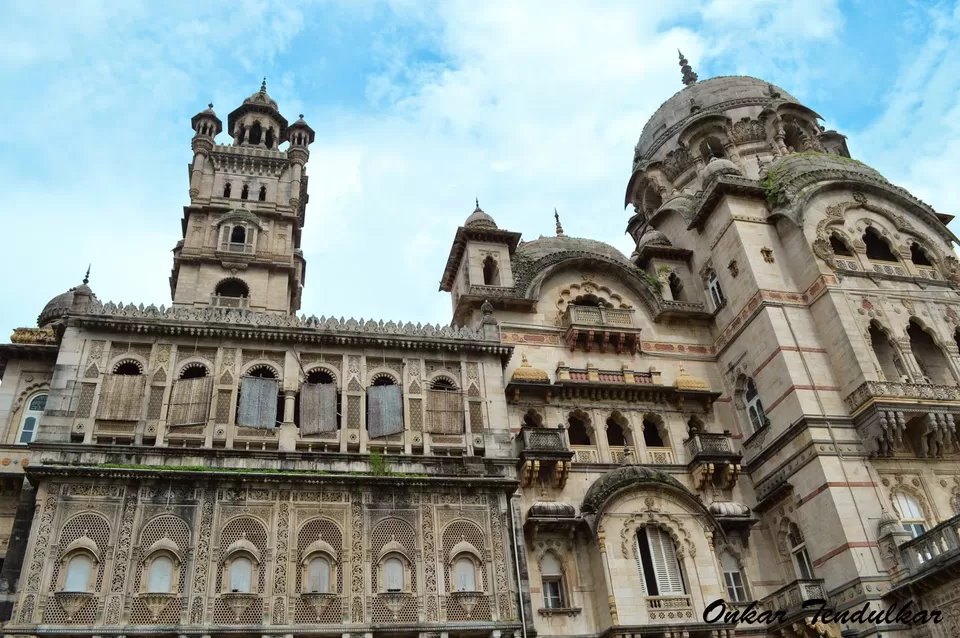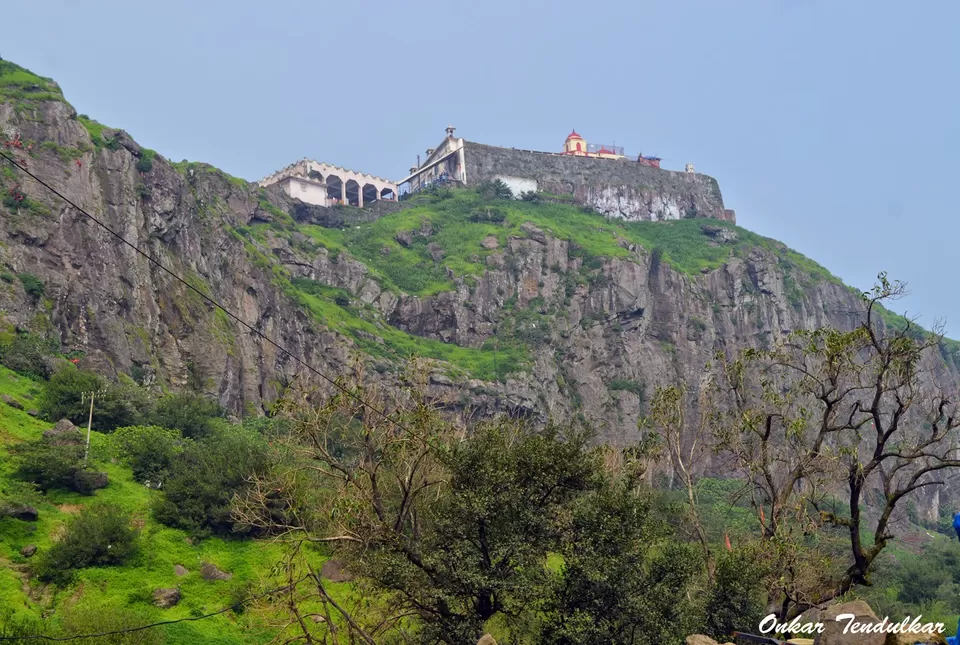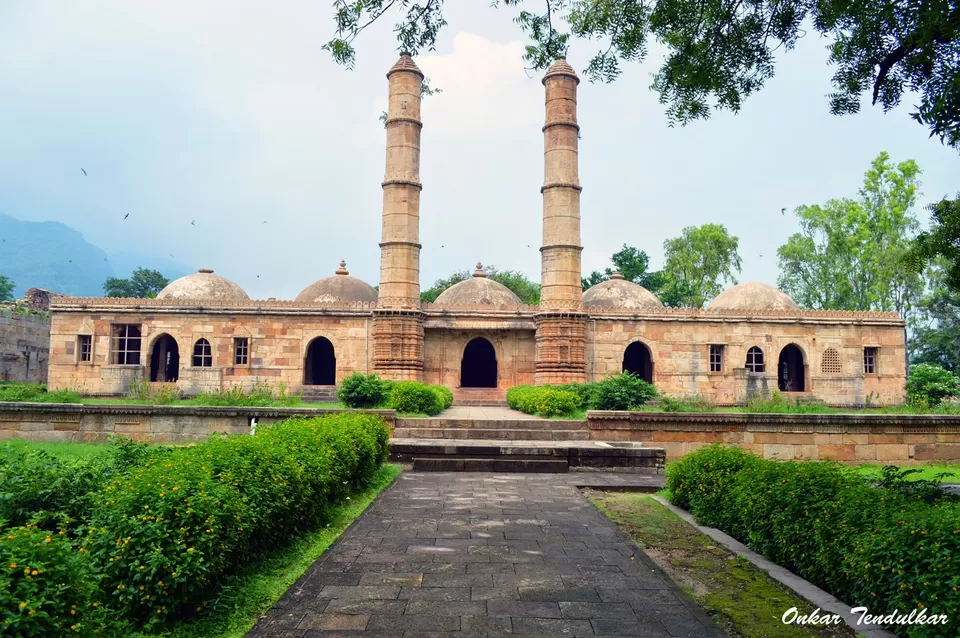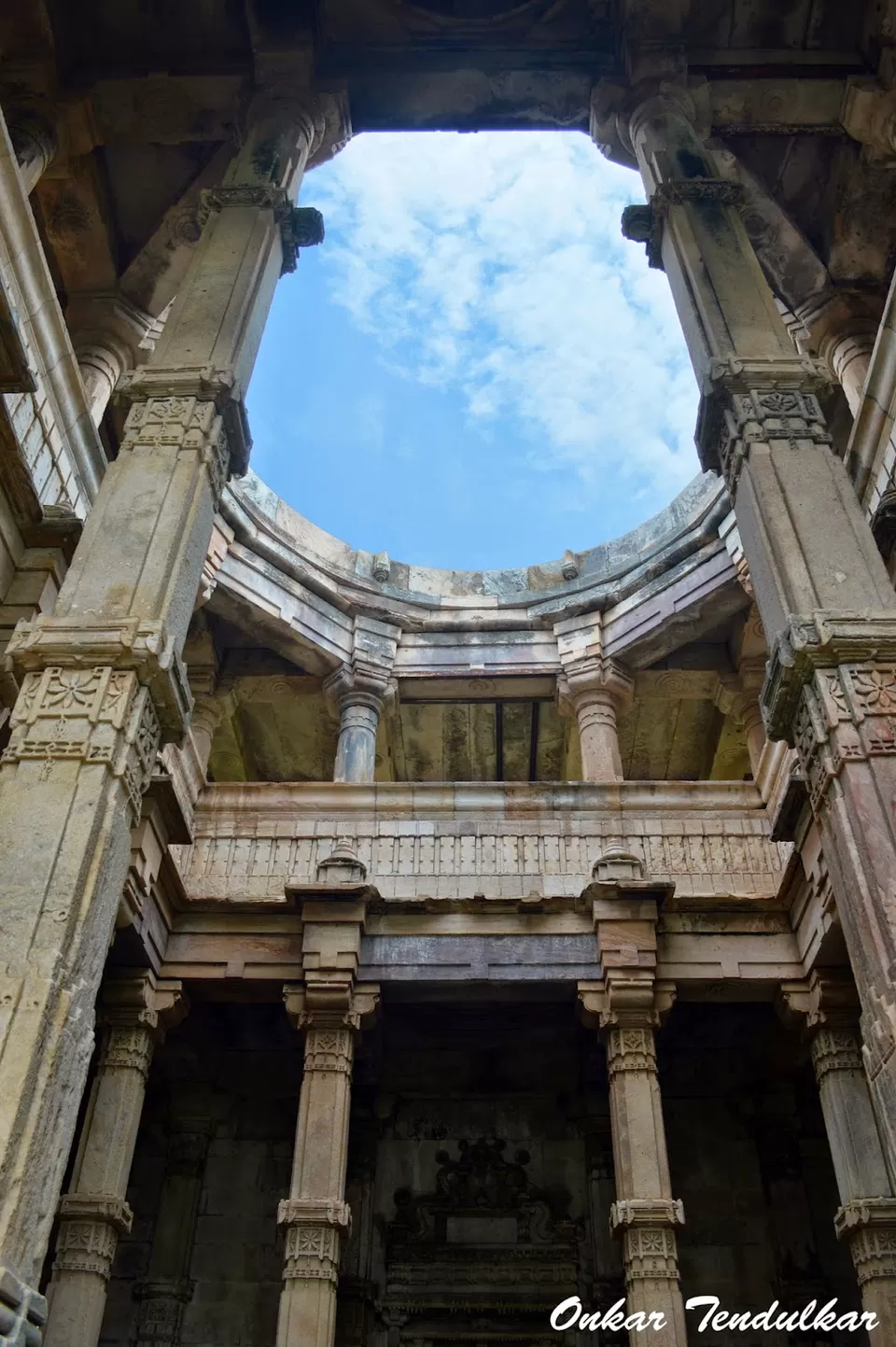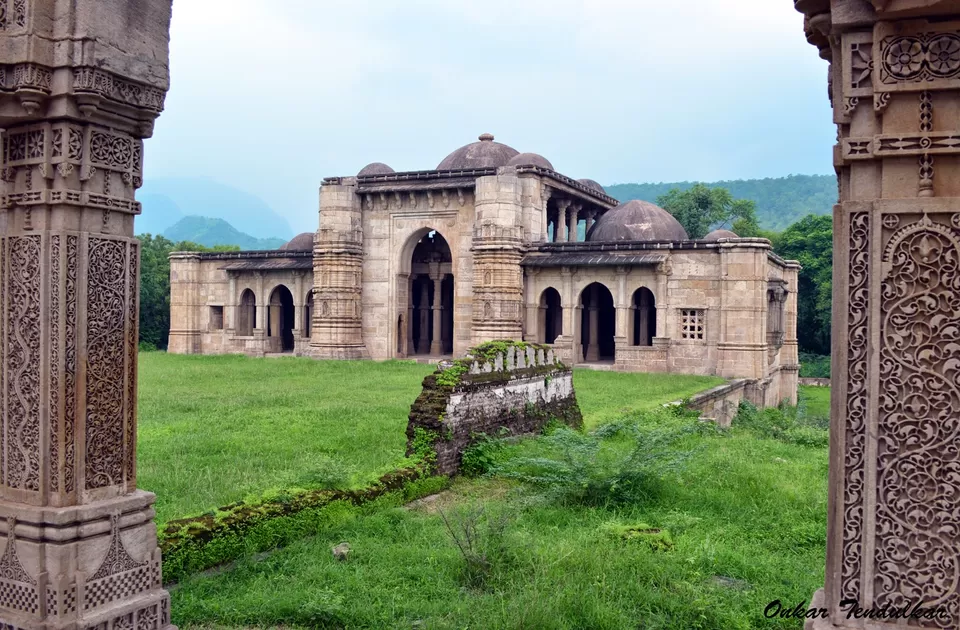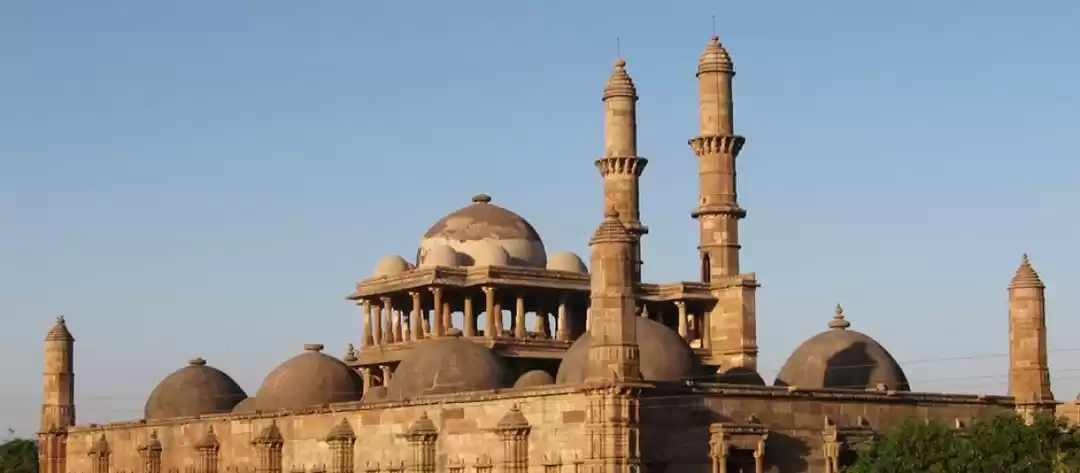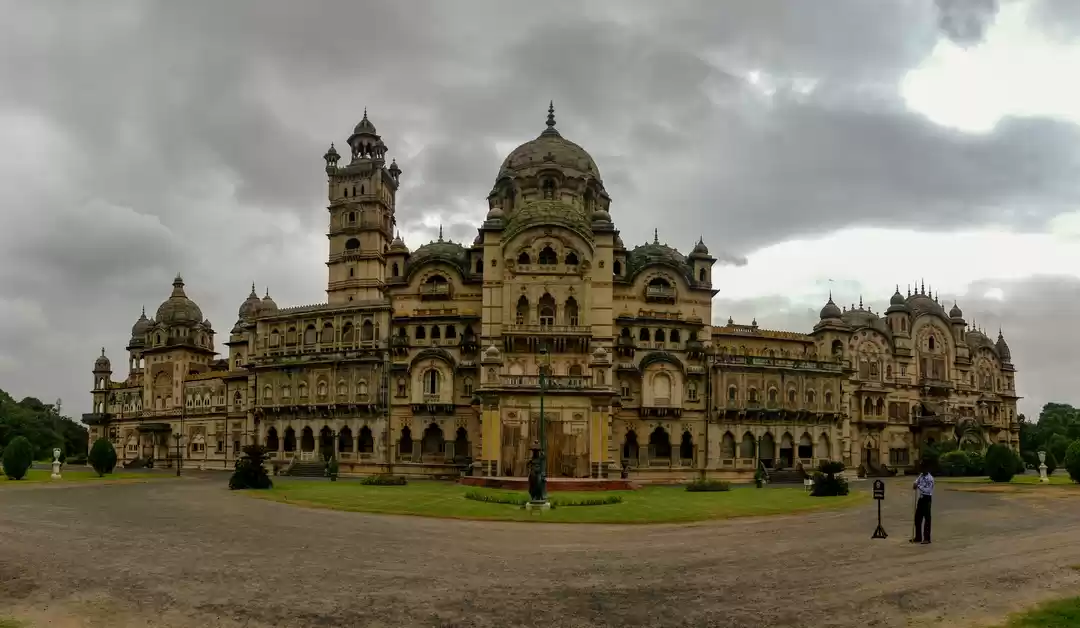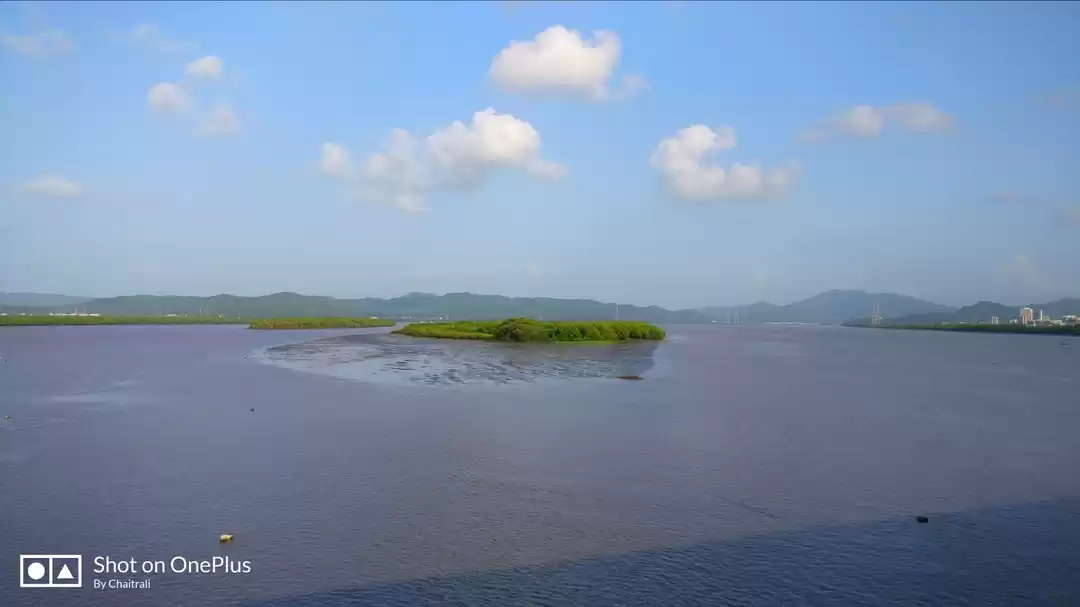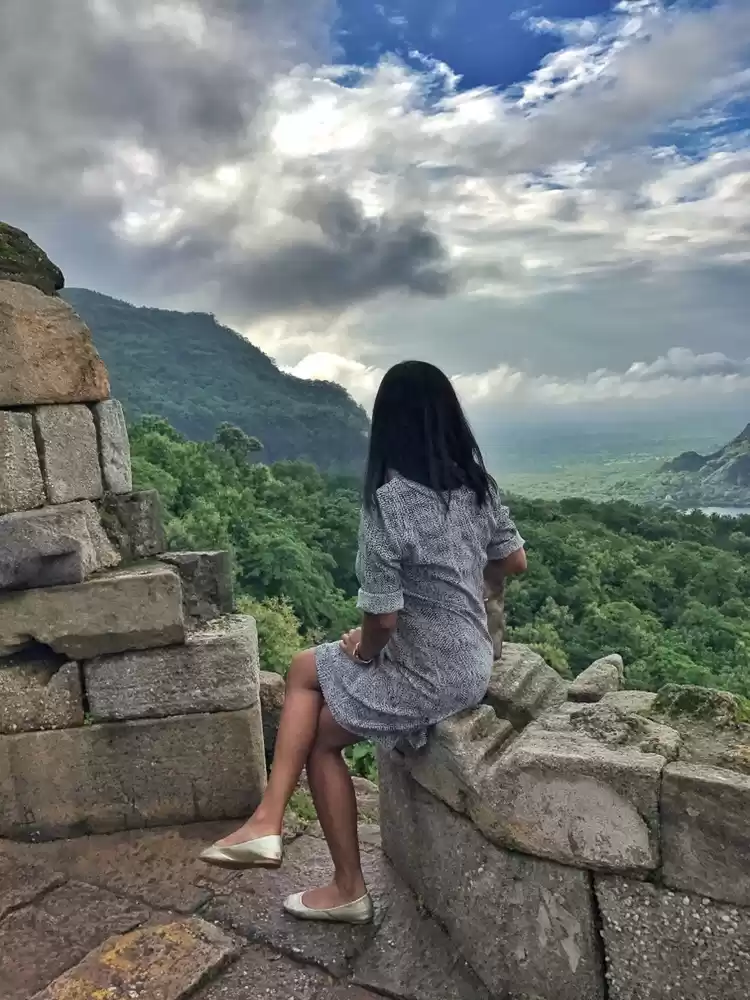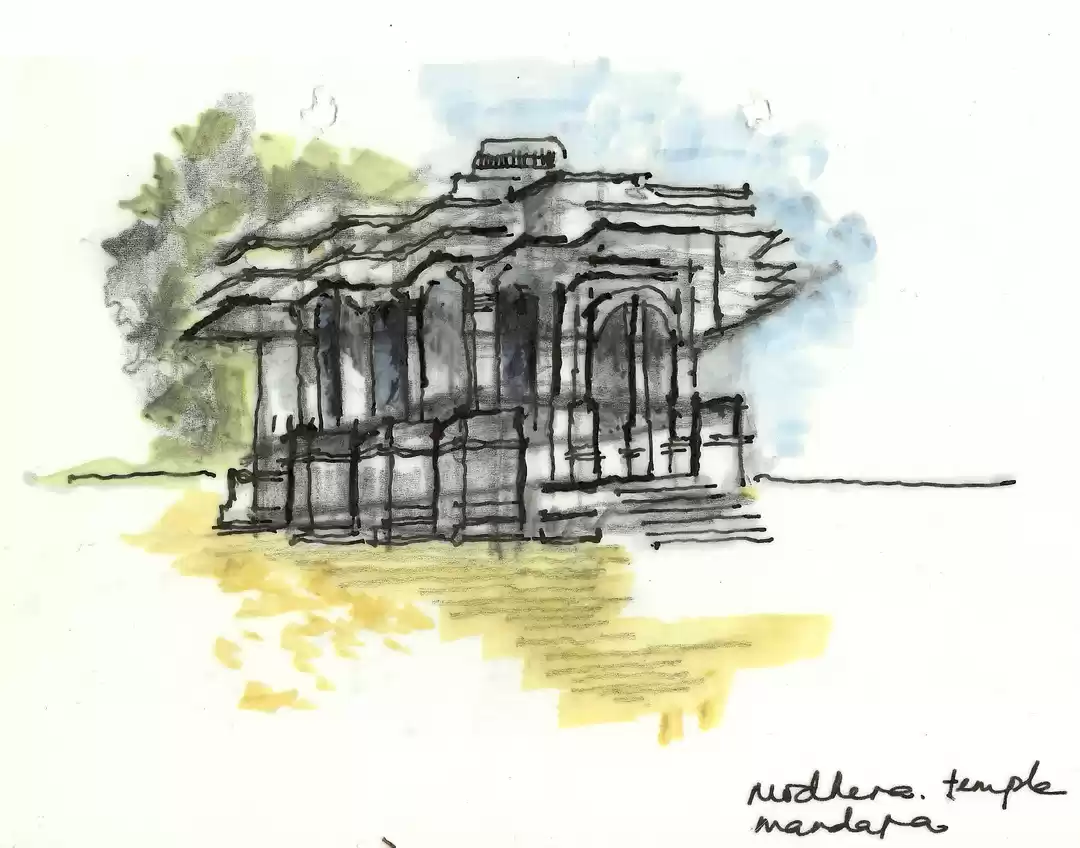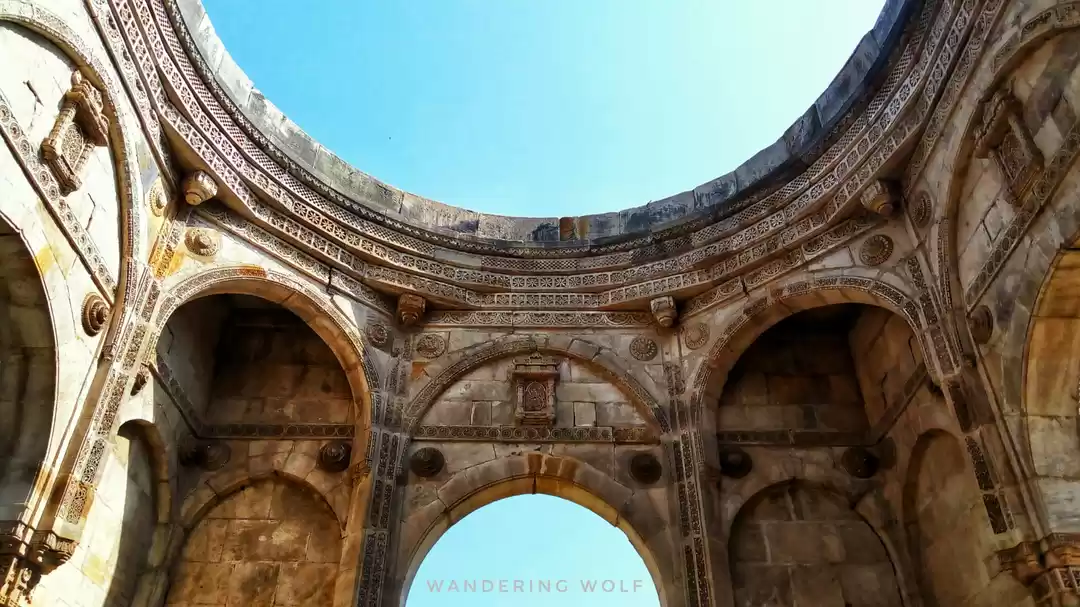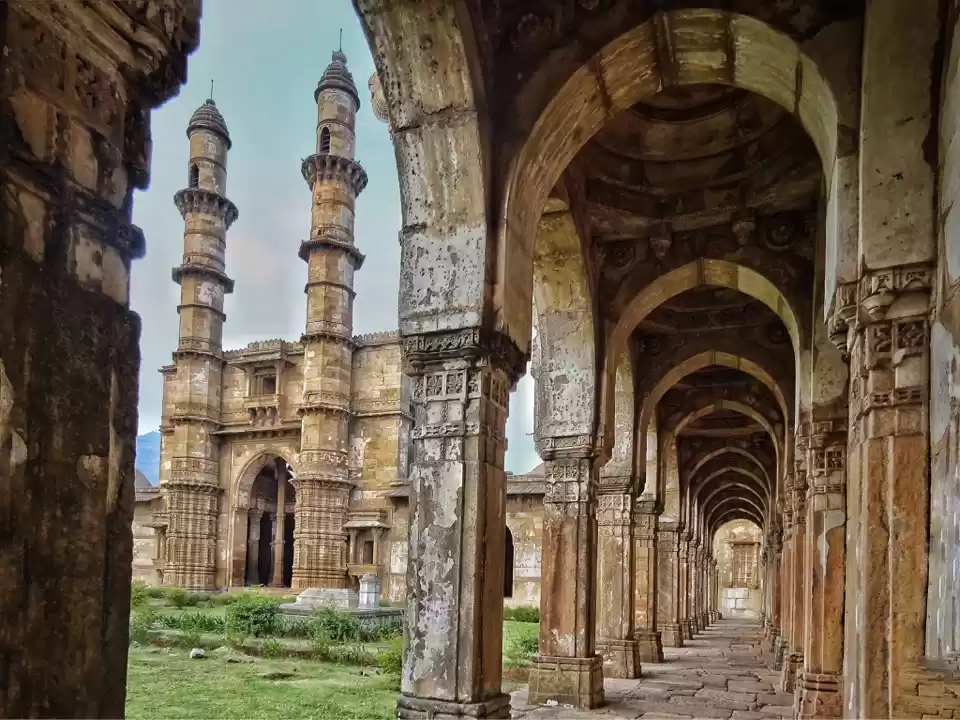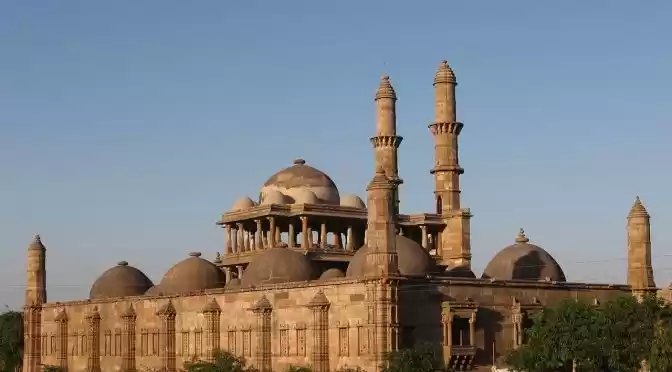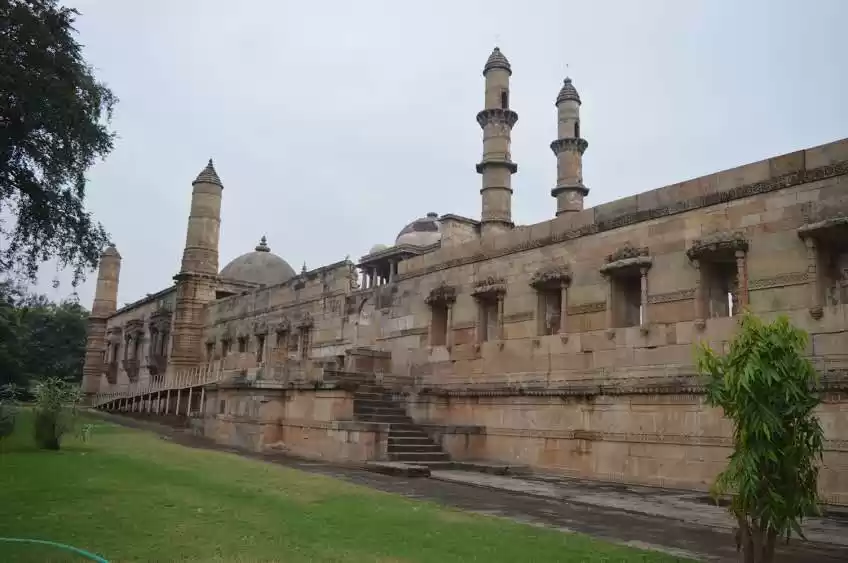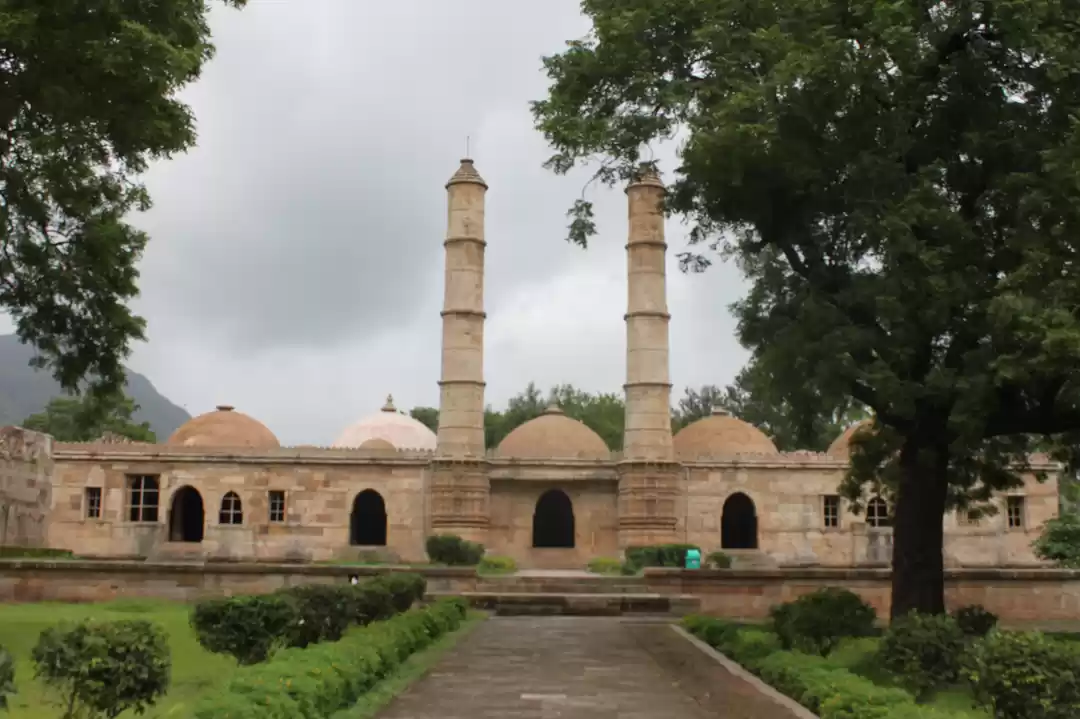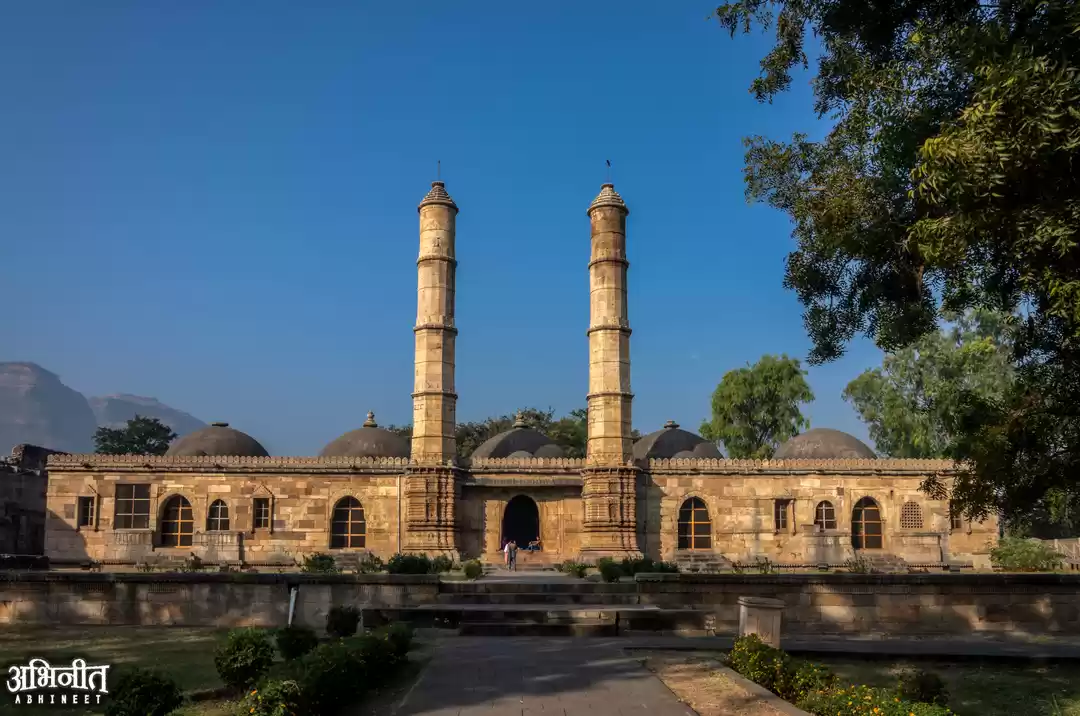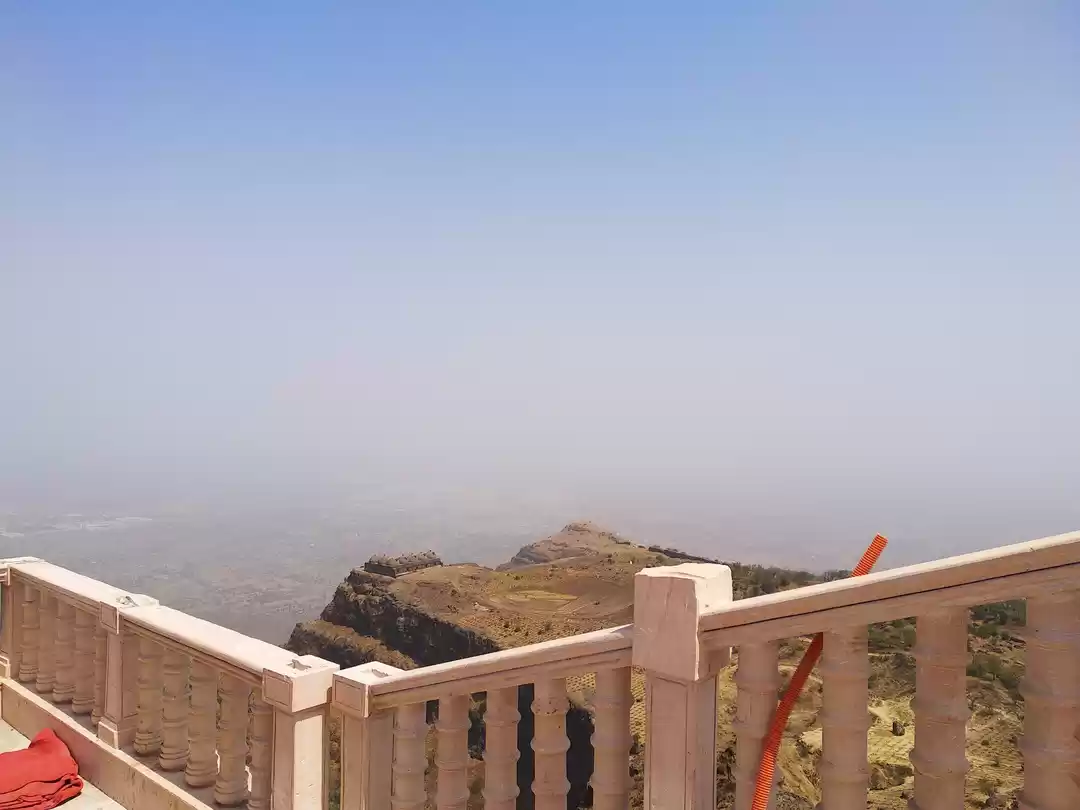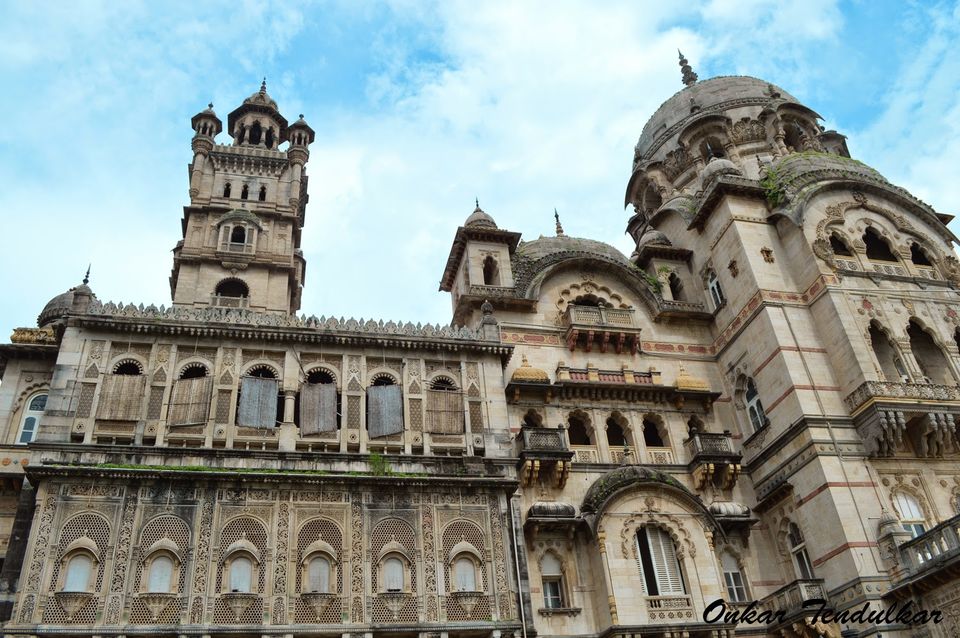
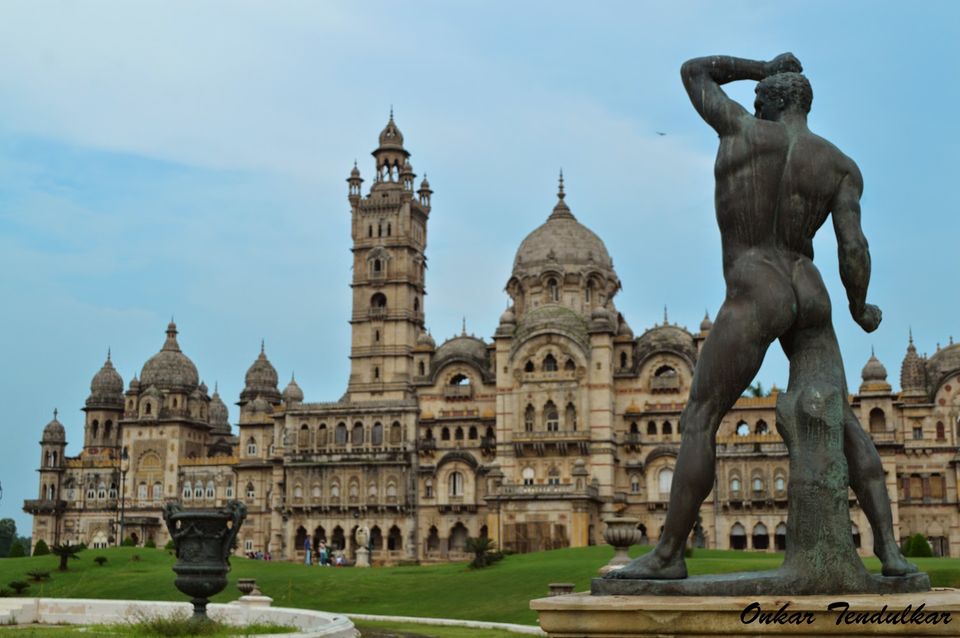
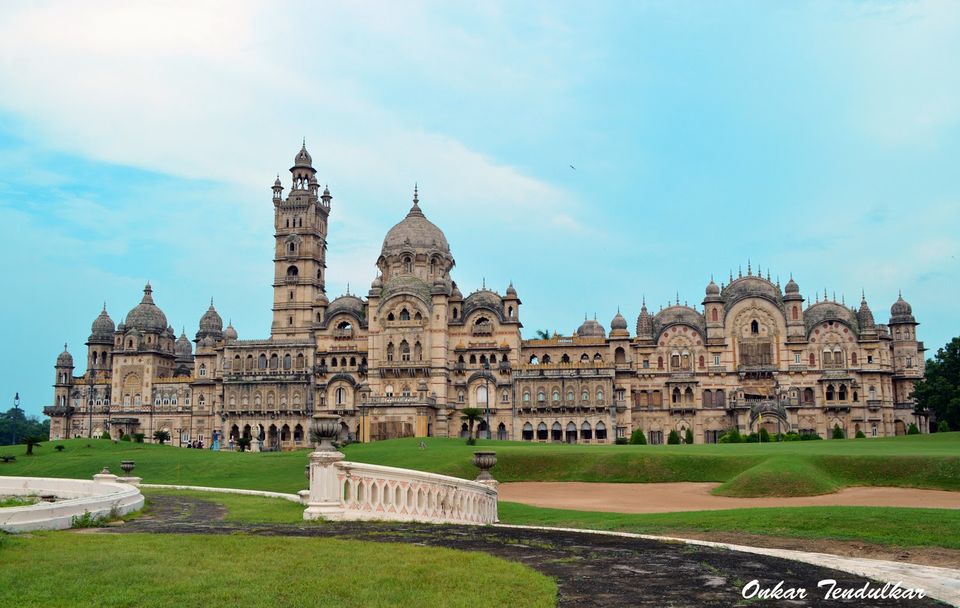
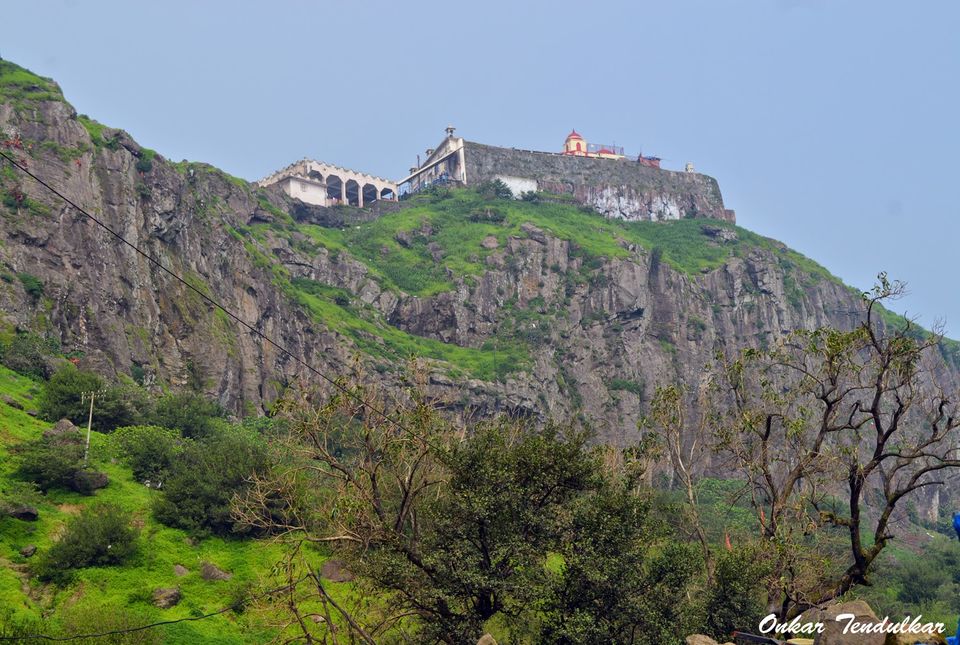
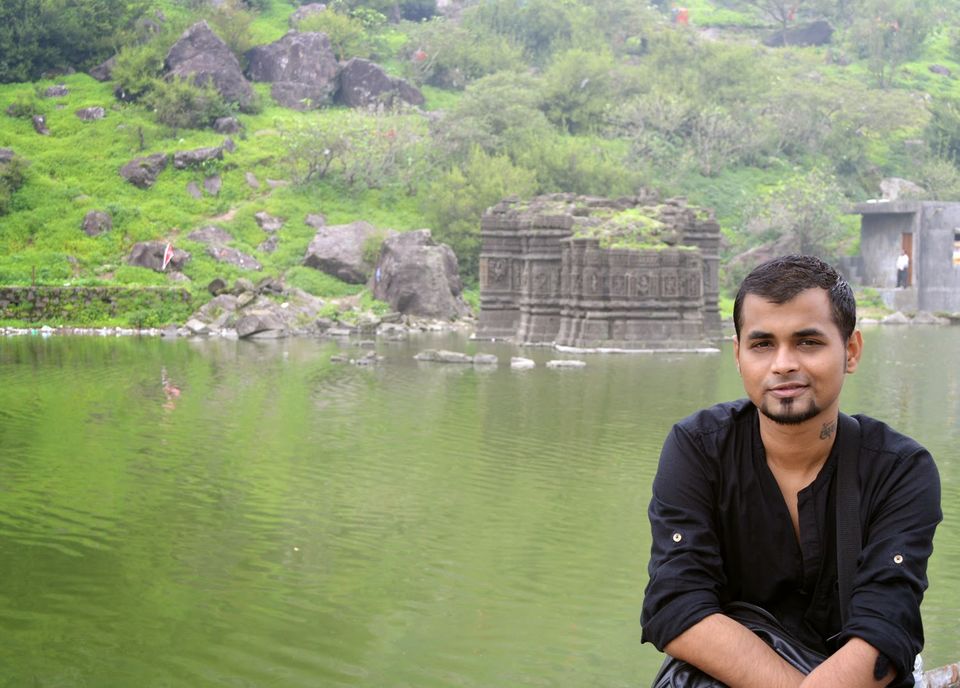
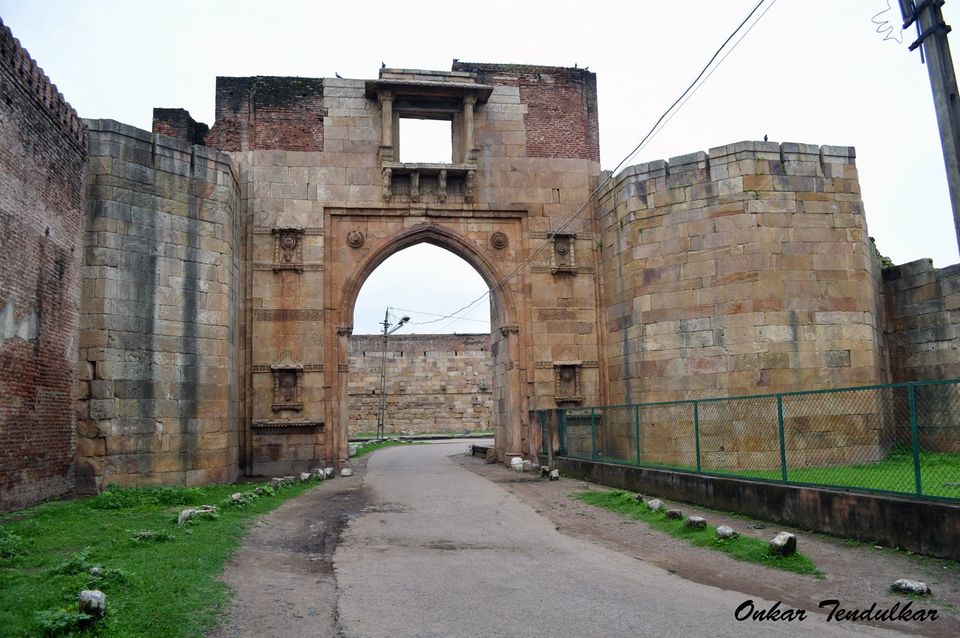
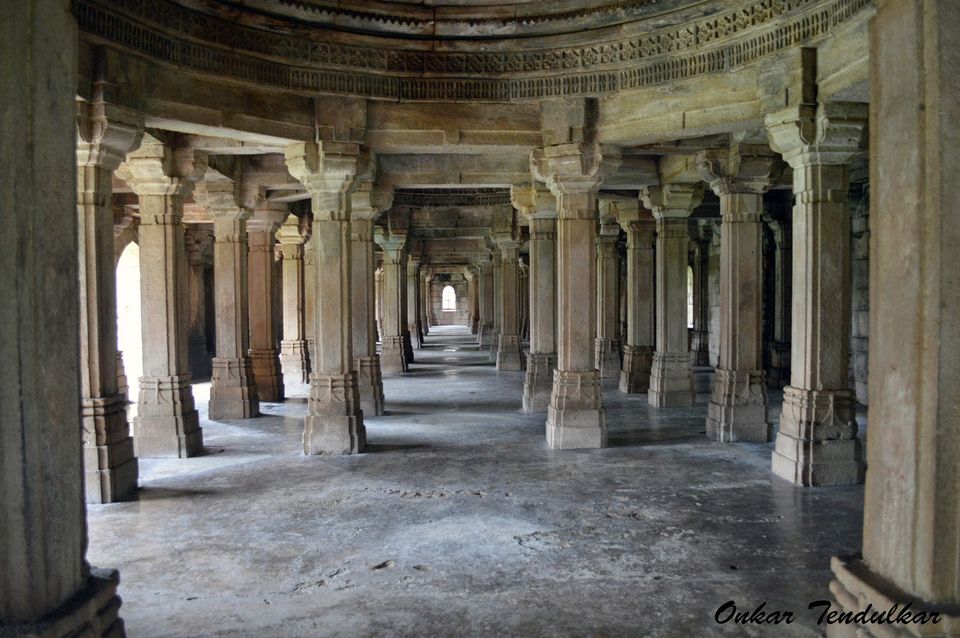
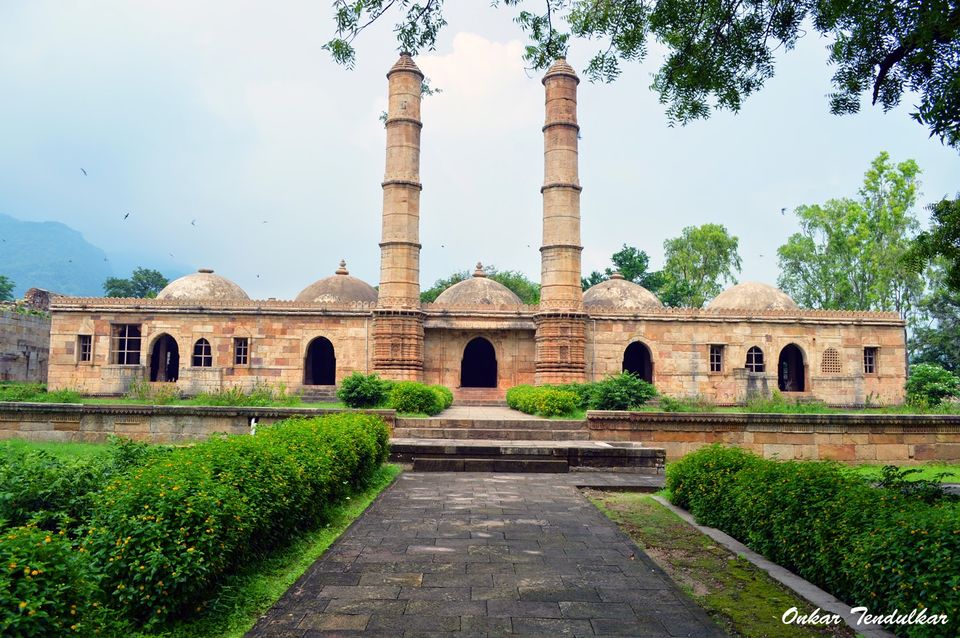
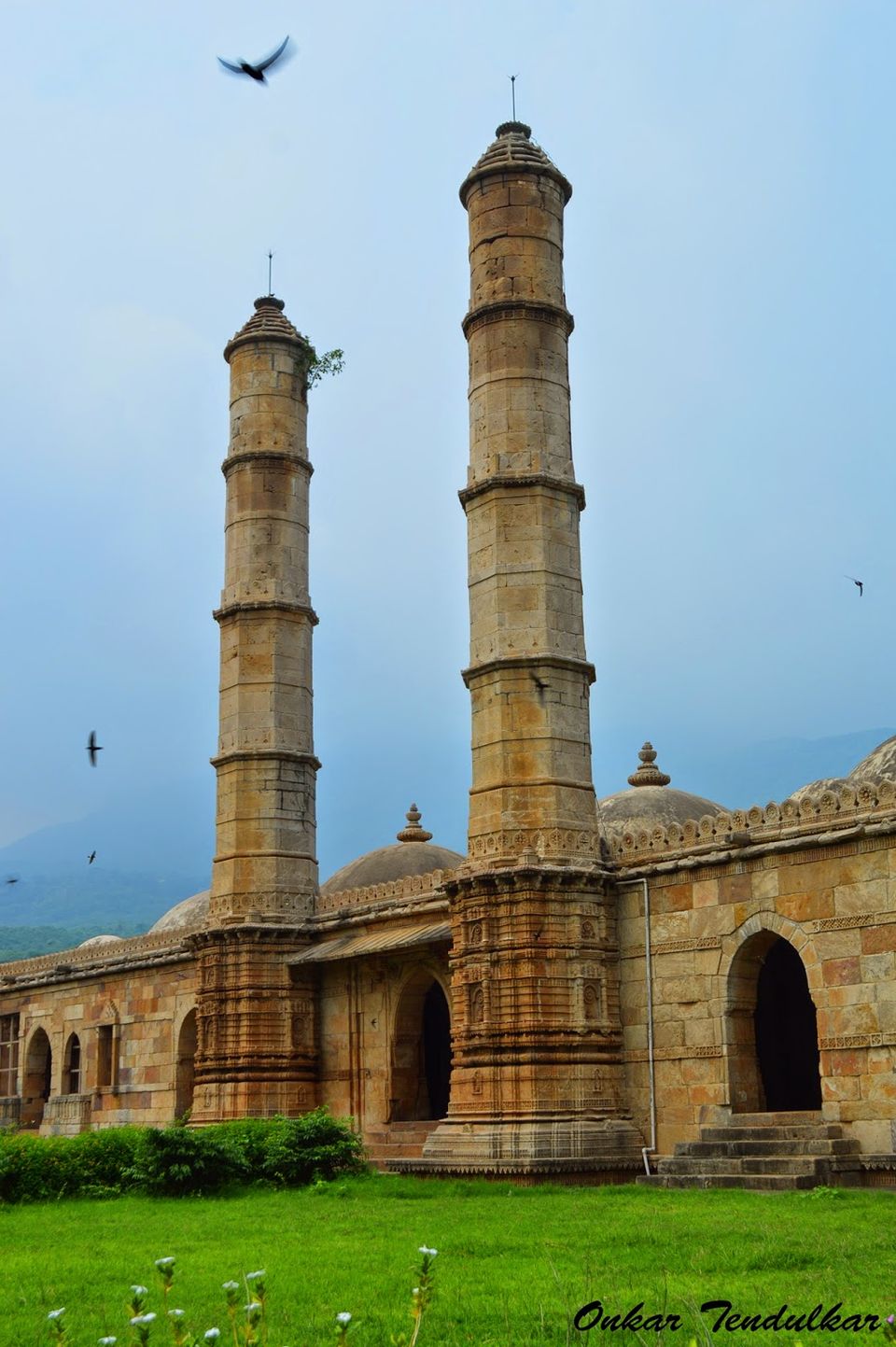
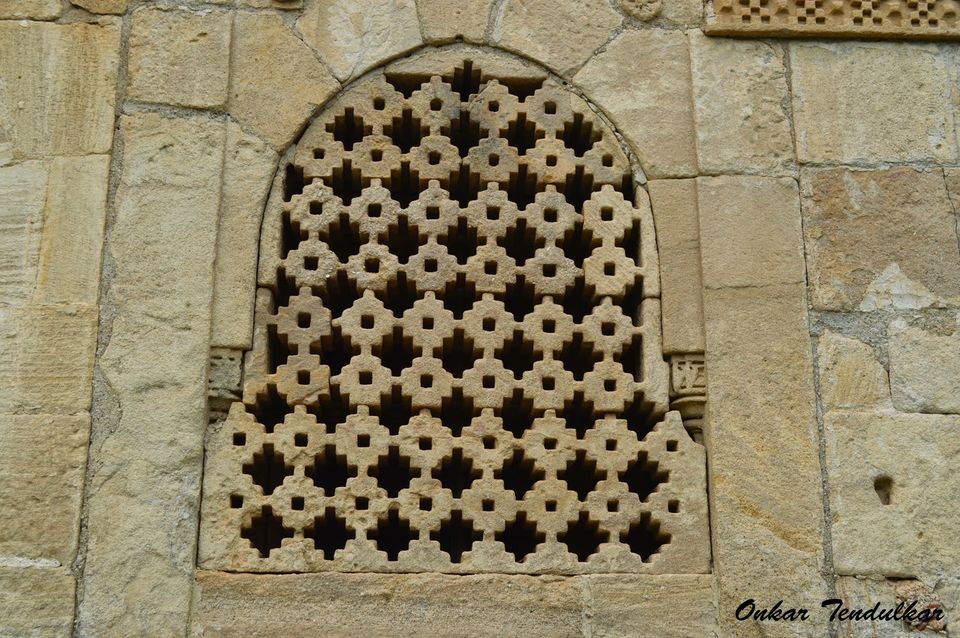
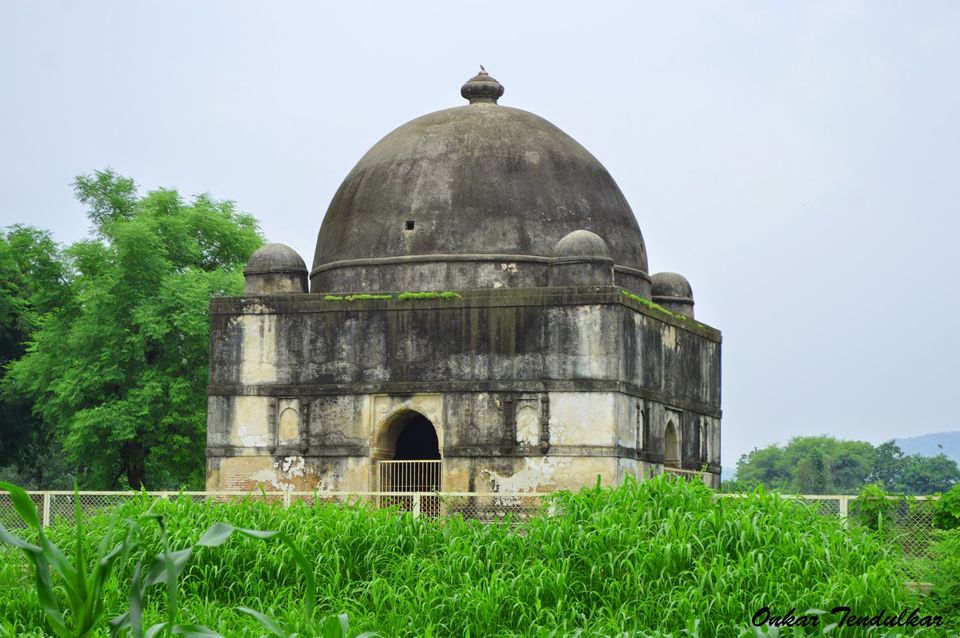
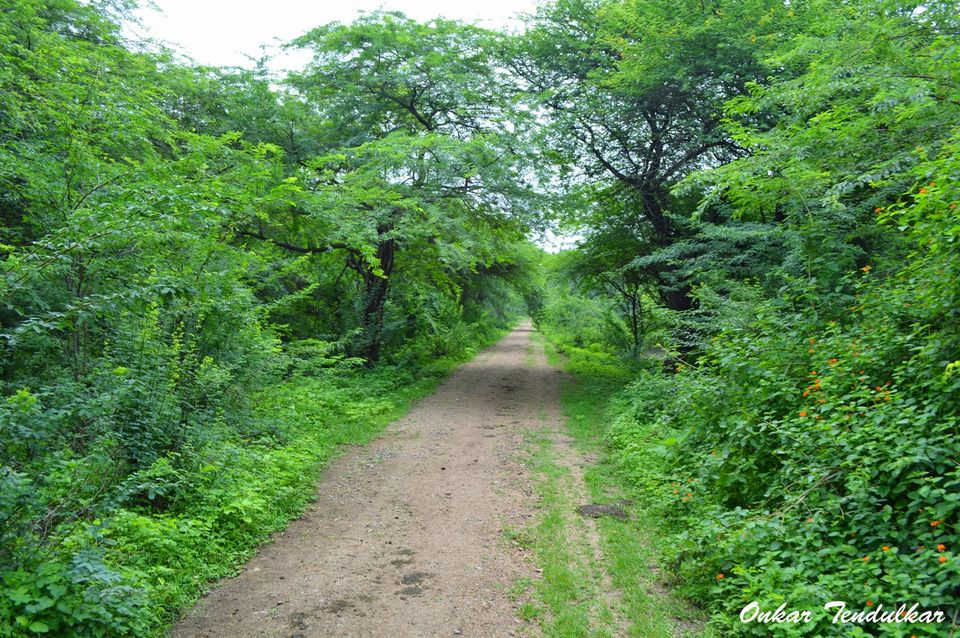
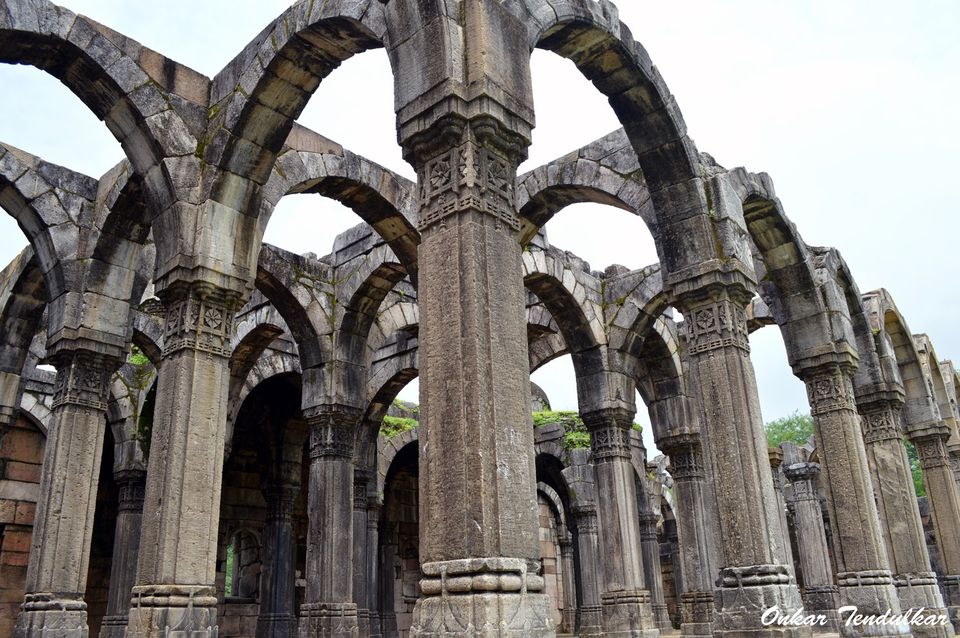
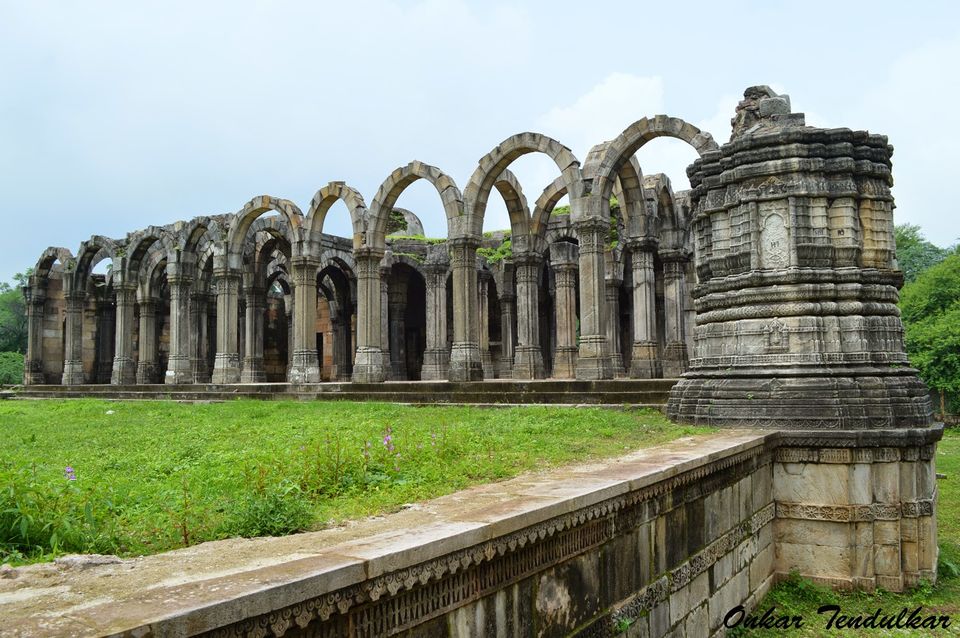
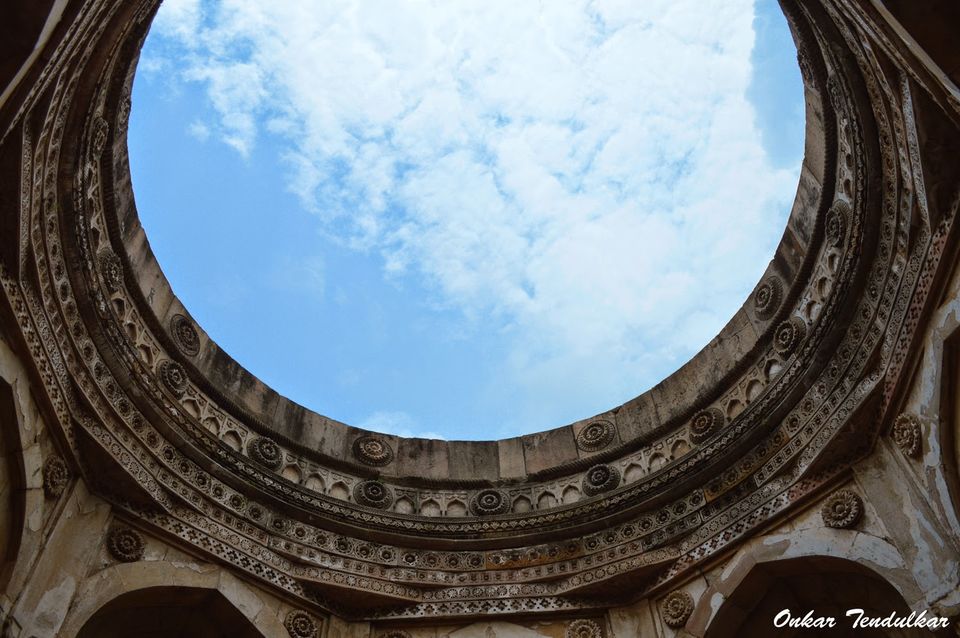
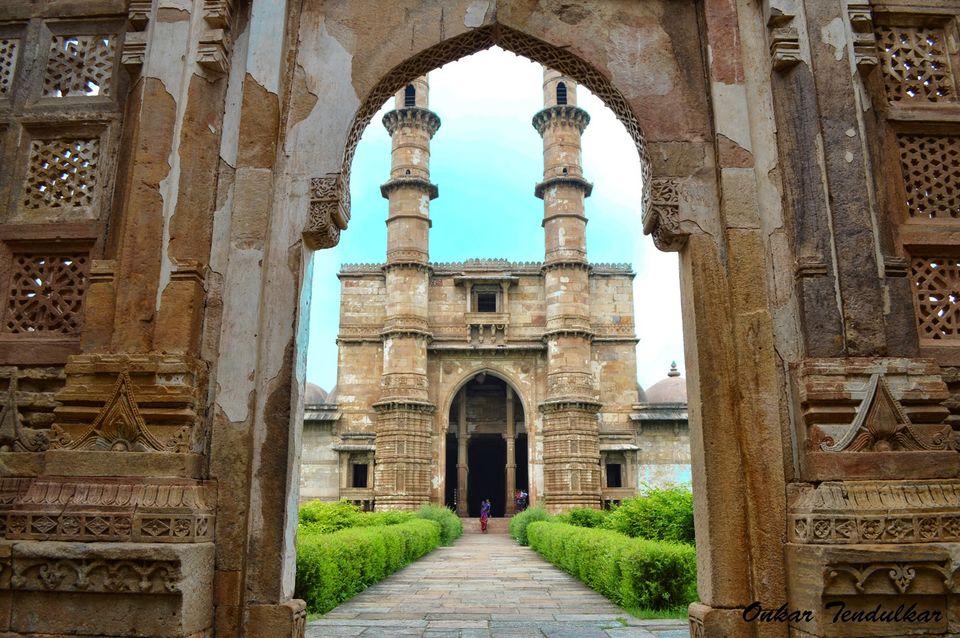
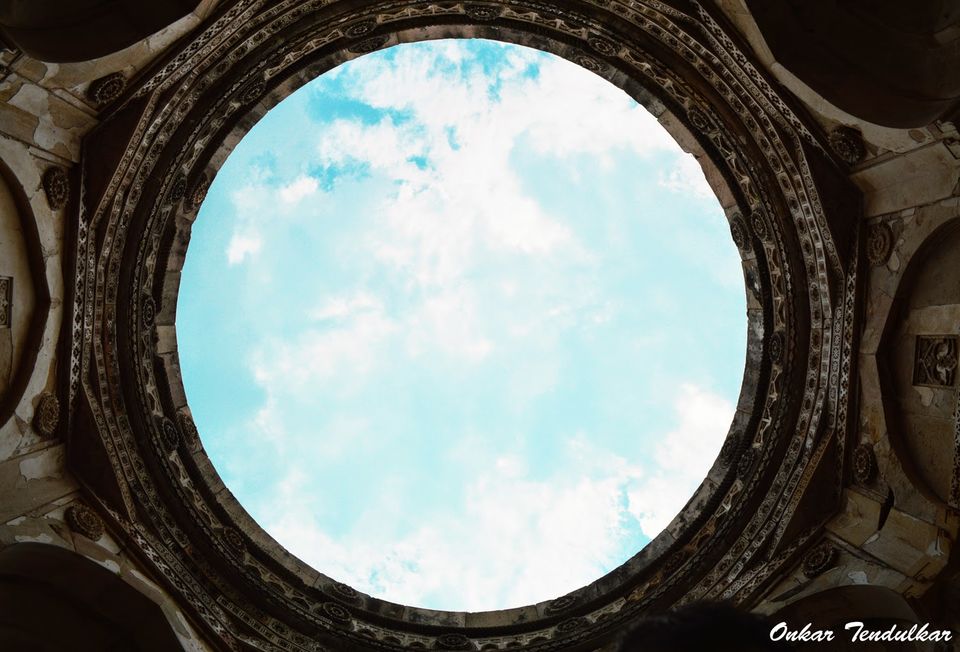
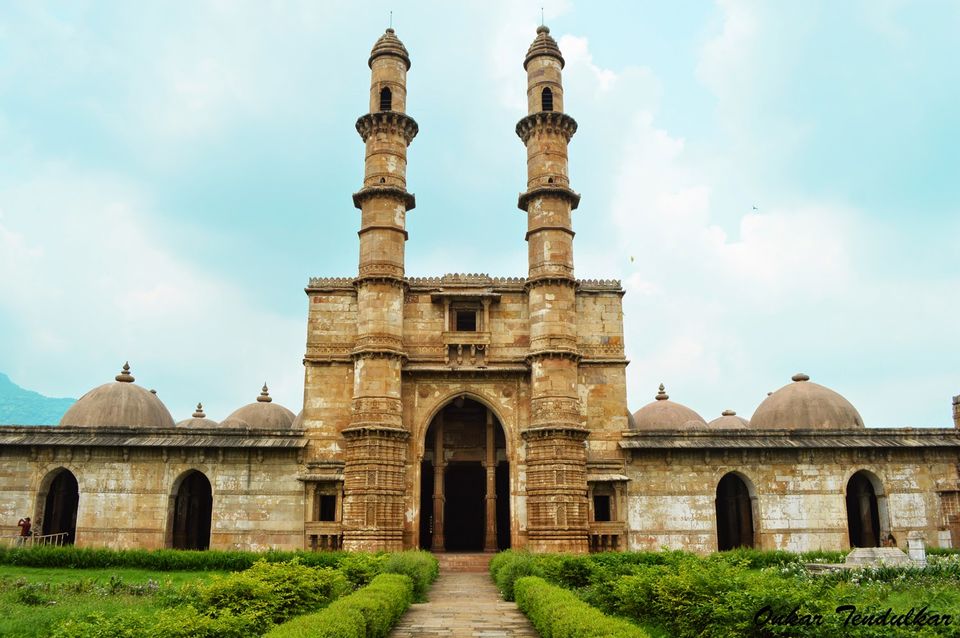
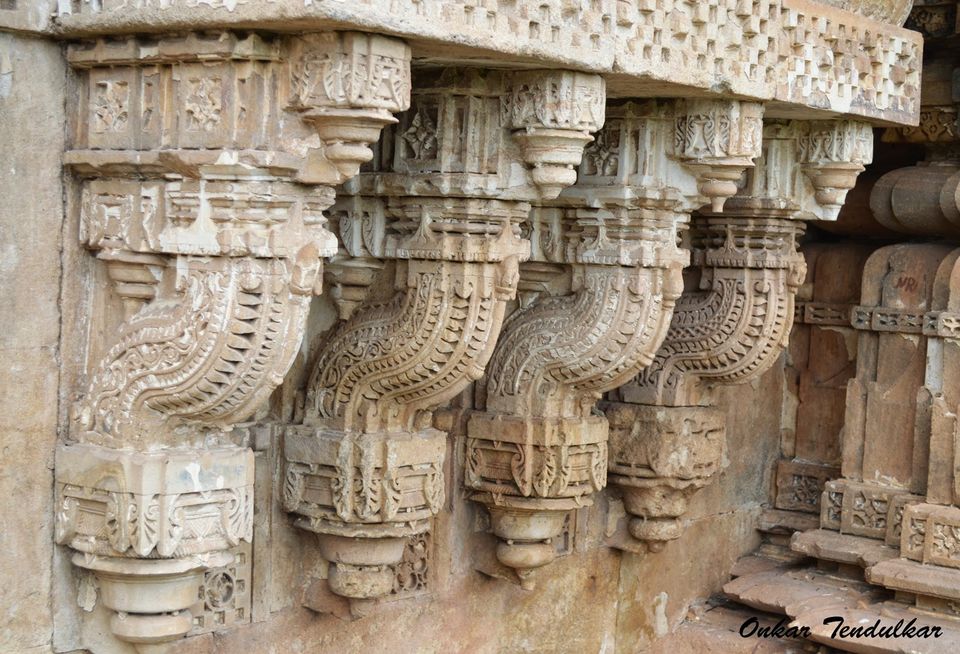
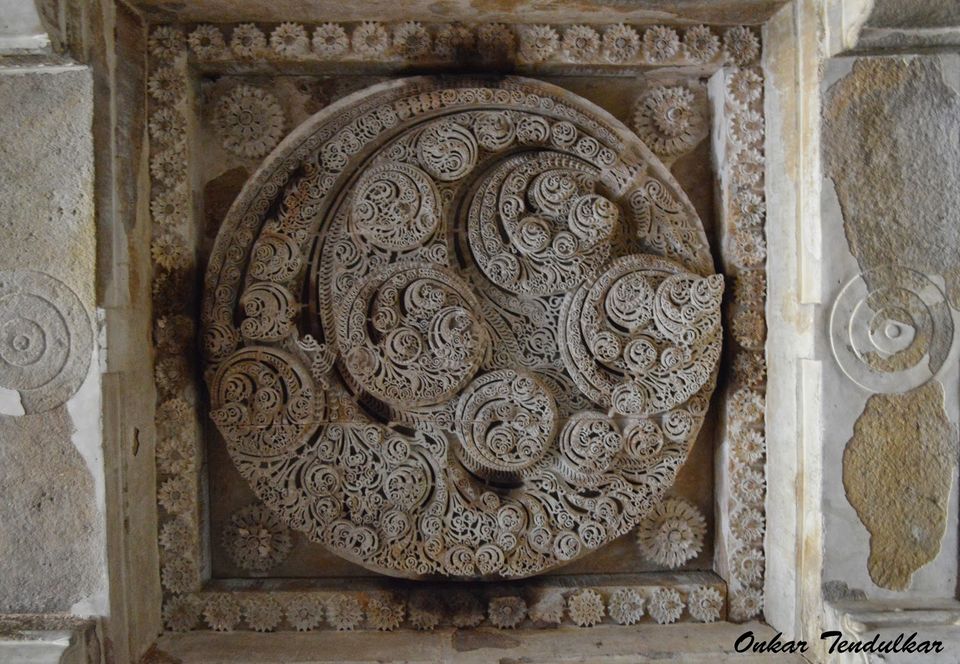
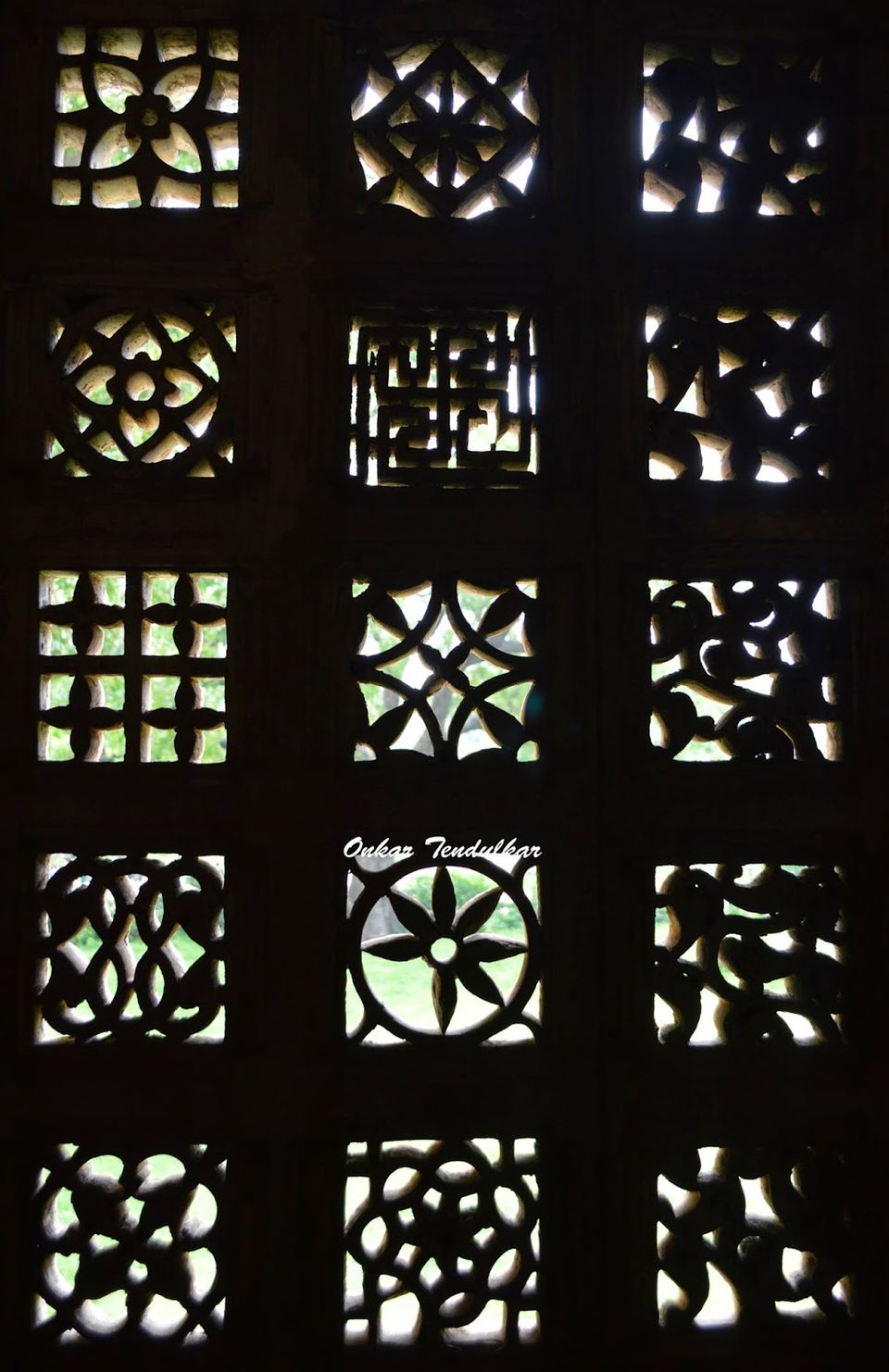
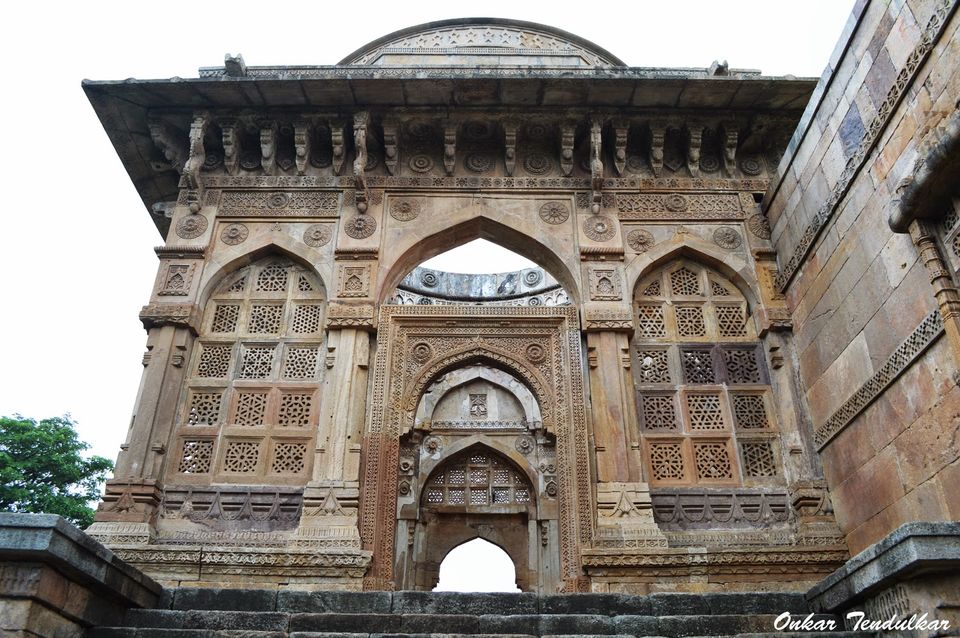
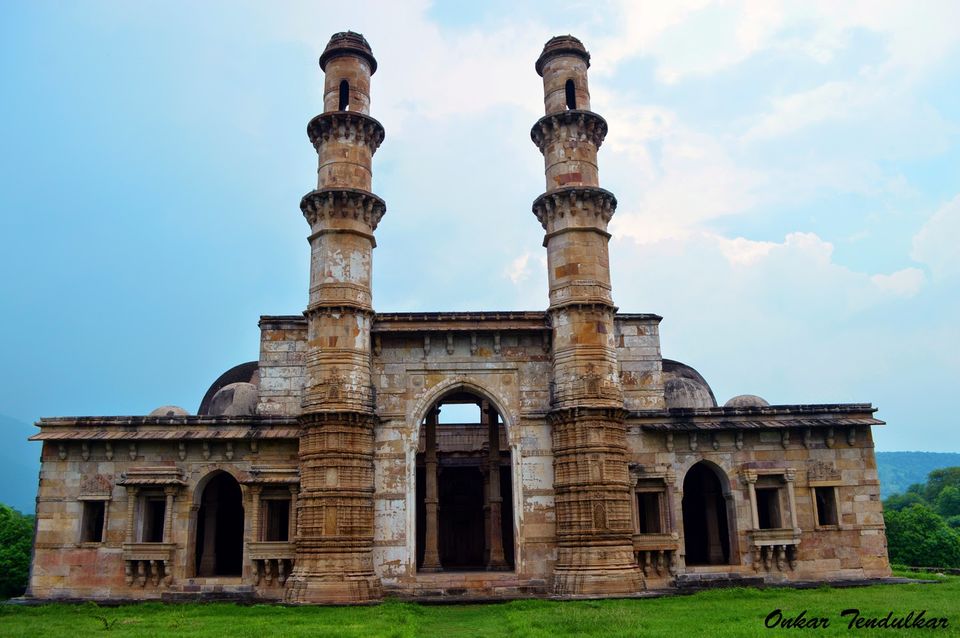
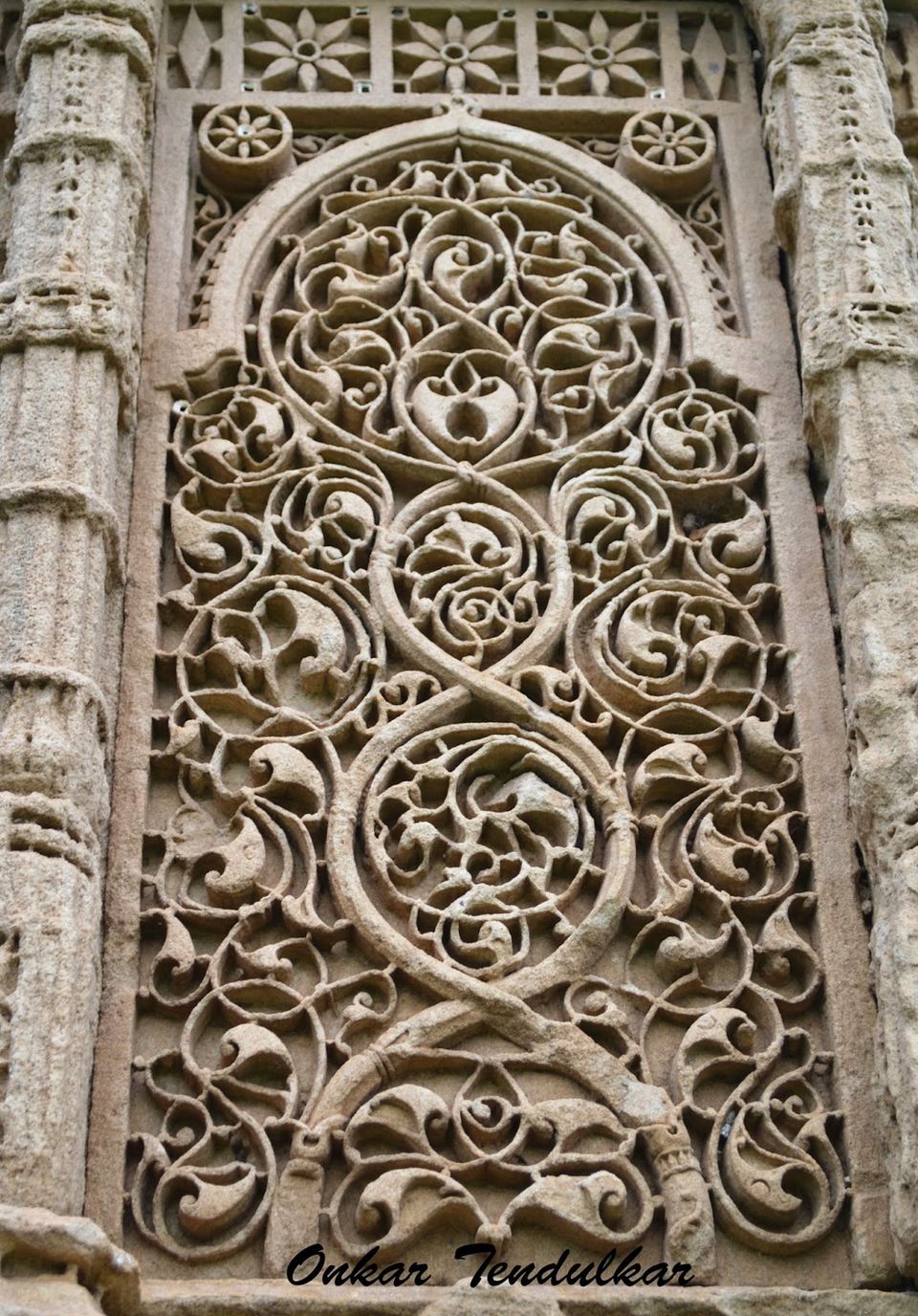
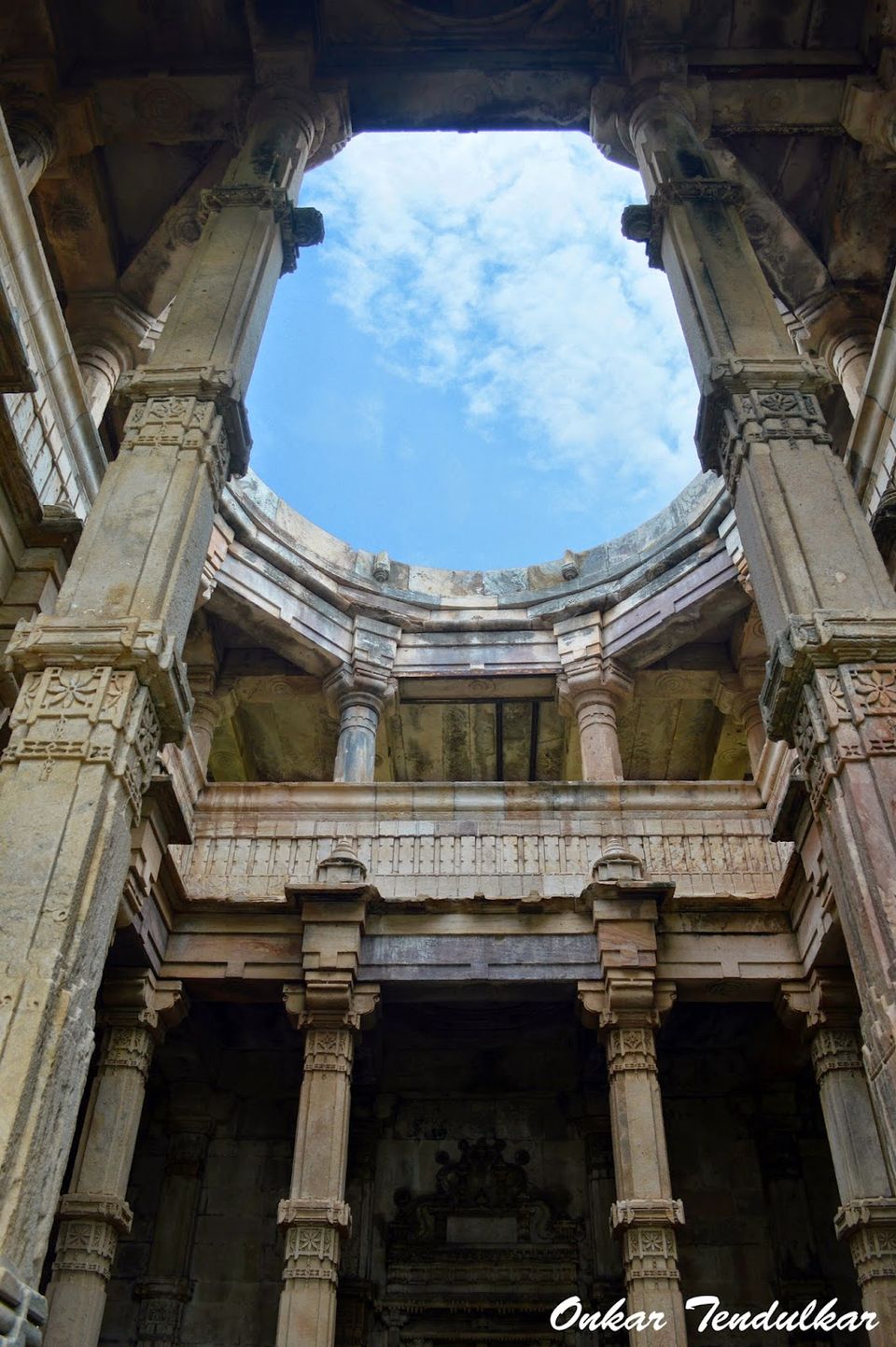
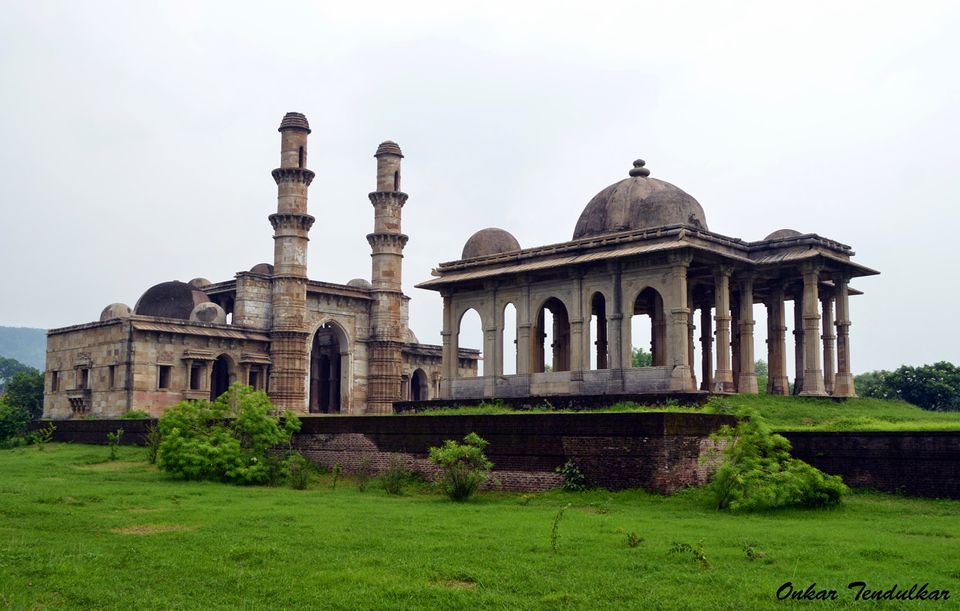
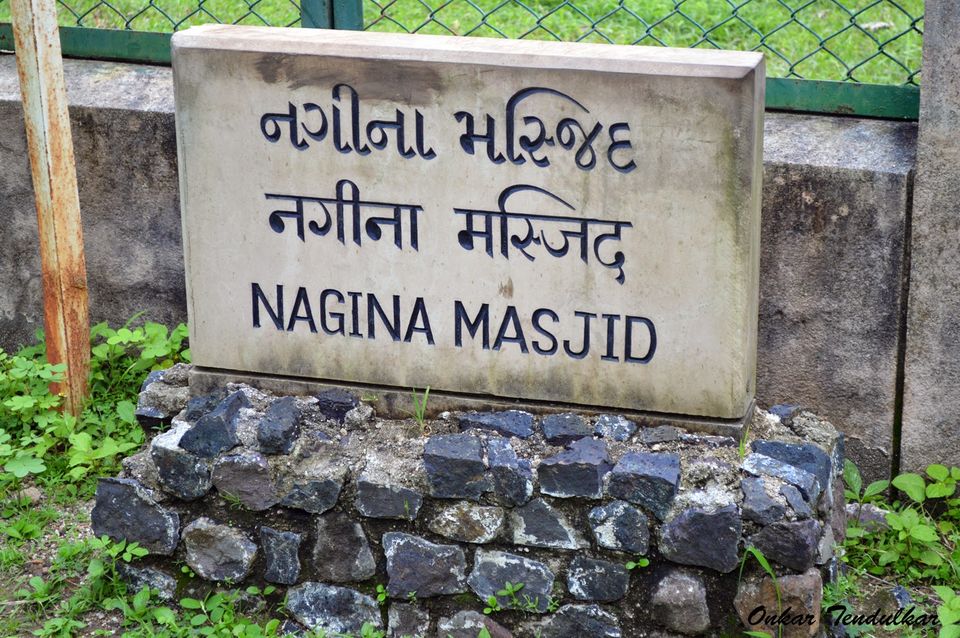
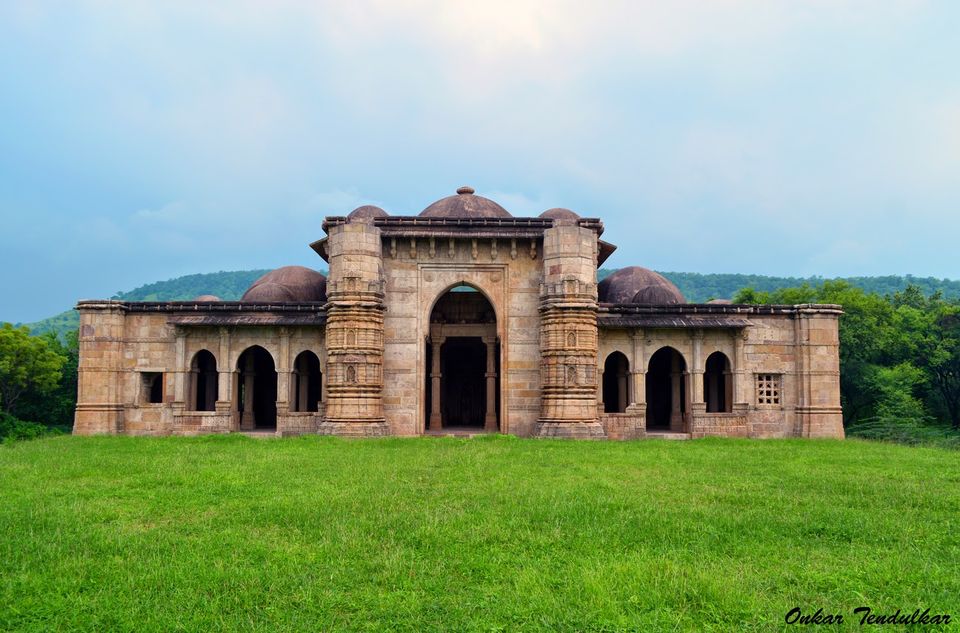
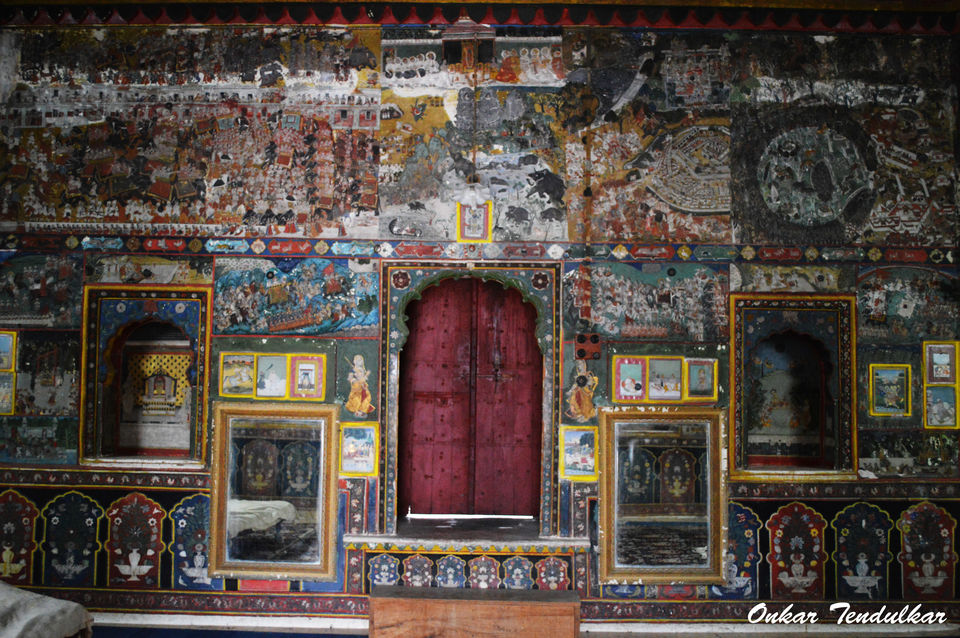
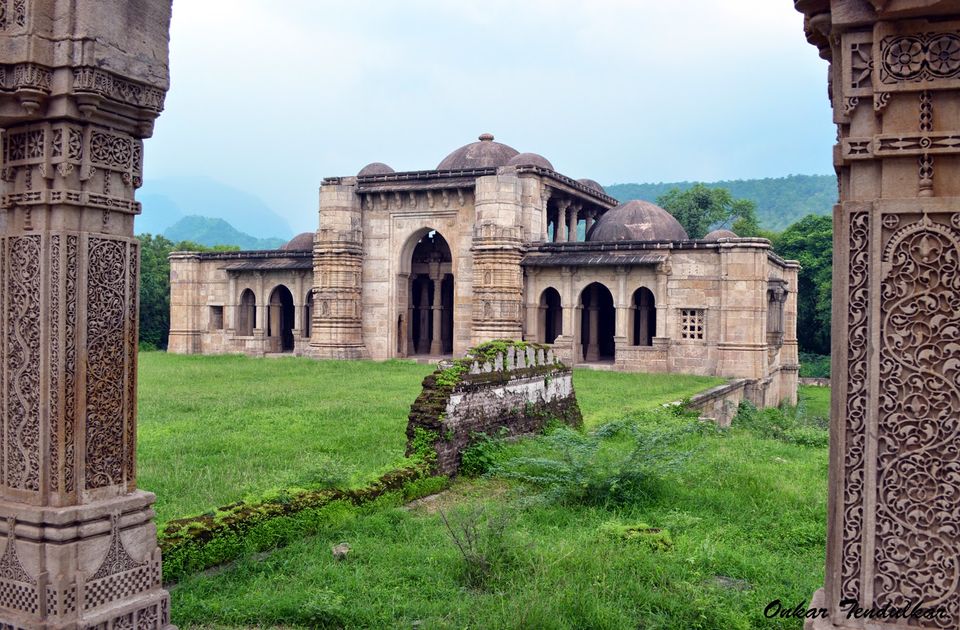
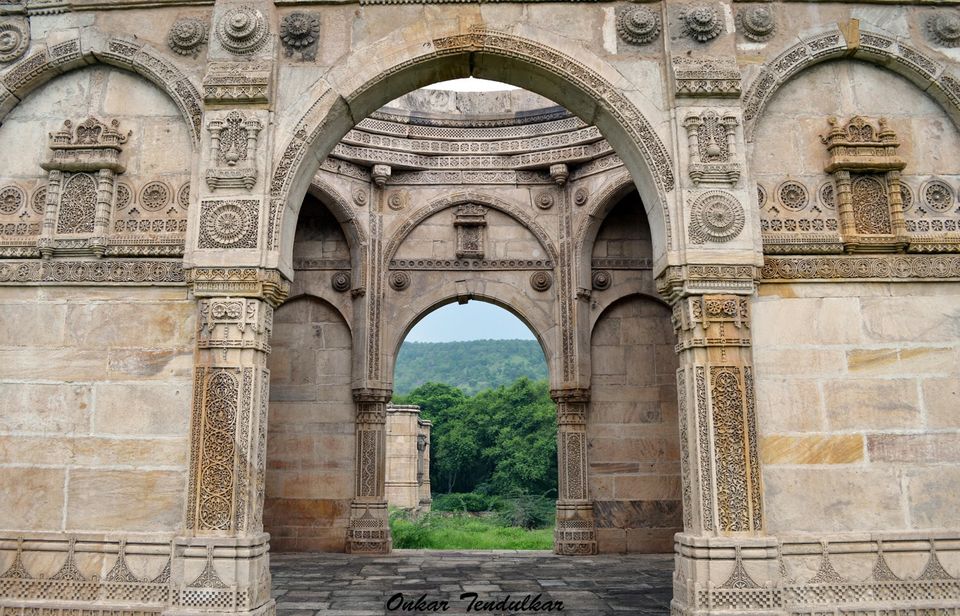
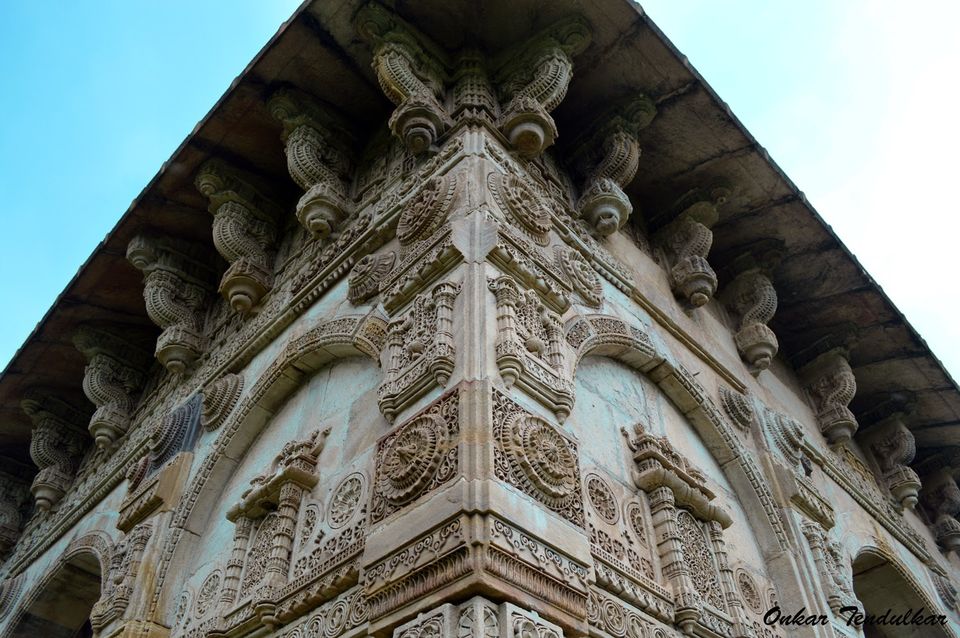
Mumbai> Vadodara- Champaner & Pavagadh> Mumbai
It was an 11th hour plan to go on a road trip all the way to Vadodara and to this UNESCO world heritage site called 'Champaner- Pavagadh archaeological park'- being called so due to the archaeological remains of this erstwhile capital of Gujarat- scattered in diameter of 6-7 km- ranging from many 15th century mosques & mausoleums, fort walls/ arches to Hindu and Jain temples (oldest belonging to 10th century) a step well and other minor buildings.
Day1 :
Me and my friends left from Mumbai around 8 AM for Baroda. Except for some traffic at Ghodbunder junction, we cruised ahead smoothly.
Couple of hours later, we crossed into Gujarat and left behind the Gujarati towns one by one very speedily- Vapi , Pardi, Valsad, Navsari and Ankaleshwar and so on… and then we got stuck just before the Narmada crossing bridge near Bharuch. I heard from friends that it’s a regular scene here due to some construction activity, only two lanes are kept on to go towards Bharuch and ahead. We nearly wasted a little more than an hour in the traffic maneuvering slowly- waiting for our turn to cross Narmada.
Post crossing the Bharuch bypass, the last 70 km was again a cake walk. An hour later we entered Baroda - around 4 pm. We first decided to head straight to Baroda’s main landmark- the LaxmiVilas palace of erstwhile kings- the Gaikwads.
Laxmivilas palace was built in 1890 by Maharaja Sayajirao Gaikwad III in Indo- Saracenic style of architecture with lot of influence of Maratha architecture. The architect of this magnificent building was Major Charles Mant.
As one enters inside the palace compounds, there is plenty of space for vehicular parking for Visitors. Close by is the ticketing counter (Rs.170/- per head in 2014). After buying the ticket, one has to start from the backside of the building and enter a small alleyway which then opens into a stunning courtyard in the middle of the palace. Just over there, is the administrative office of the palace from where one has to collect the audio guide for the palace. It is available in Marathi, Gujarati, Hindi and English. (One thing about Baroda is that almost the 40% of population here is Marathi as are the kings- and almost everyone understands Marathi here including the rickshawalas)
The audio guide took us to the important viewpoints outside the palace- like the Mayur kalash in the front lawn and the large circular pond like space adorned with statues of naked human figures and other animals. The most amazing thing about roaming in the front lawn of the palace is that its lush green surroundings are home to hundreds of peacocks and other animals. Appreciating the grandeur of this palace amid the squealing of peacocks is indeed an unmatched experience- of course in a suitable weather.
After clicking pictures from outside, the audio guide led us to the entrance porch. Photography in the interior of this palace is strictly prohibited. The entrance hall of the palace is a small but extremely beautiful space which has metal sculptures done by famous Italian sculptor- Fellici on both sides; while in the center is a huge vase with mermaid murals on it. The entrance hall is a tall space with 4 dramatic chandeliers hung from its tall ceiling.
Moving ahead from the entrance hall, one sees flight of stairs leading to upper floors occupied by the Gaikwads- which are not open for public. The corridor on the right leads to the armory of kings- which exhibits hundreds of weapons from their private collection- belonging to the great Shivaji, Mughals and British era. Especially worth seeing are the massive swords, the thorny Gada (mace), the machine used for releasing Sudarshan chakra in direction of the enemy and waghnakh (literally- tiger claws) used by Marathas.
The only other space in the palace, open for public is the- Darbar hall. The darbar hall even though features ornate artwork, looks largely plain compared to huge the mass it encompasses. Its walls have busts and paintings of the erstwhile kings and queens on both the sides.
The palace compound also has Fatehsingh museum which houses original paintings by Raja Ravi Verma. The 700 acres compound also has a cricket stadium and a golf course other than the massive open lawn and jungle.
Finishing with the palace, we went to Ginger hotel where we were going to stay tonight.
Late eveing, we again went out for a stroll. It was the time just before the Ganeshotsav. Baroda seemed all ready to welcome its favourite deity. Some Ganesh idols were already on their way to the pandals. Everything around was lit up and everyone around looked so very cheerful!
We then visited a few malls in Baroda and then headed for dinner at the famous Kansaar hotel near Baroda station for Gujarati thali. Not to mention, we stuffed ourselves beyond the limits, came back to hotel and crashed in the bed.
Day2 :
We started from our hotel around 7 AM to go towards Champaner. The roads were empty as expected and without any traffic we exited from Baroda on the Baroda- Halol state highway.
The highway is so smooth and clear of any obstructions that we reached Champaner village (approx 40 km from Baroda) within 40 minutes.
‘Champaner- Pavagadh archaeological park’ roughly consists of two parts viz. Pavagadh- which has ruins of fort of Hindu Raval kings and Champner- the earlier capital of Gujarat constructed by Mahmud Begada- the Muslim ruler of Gujarat. While Pavagadh mainly consists of Hindu and Jain temples, Champaner consists of Islamic buildings like mosques and tombs. Base of Pavagadh mountain is approx. 4km uphill from Champaner base village.
We decided to start our tour of the area by first paying a visit to the famous ‘Kalika Mata temple’ atop Pavagadh hill. This temple- which is considered to be one of the 51 shaktipeeths; attracts thousands of pilgrims every day. The road to Pavagadh cuts through the lush greenery of Jambughoda wildlife sanctuary which Champaner- Pavagadh are part of.
At the base of the Pavagadh mountain, there is parking facility for vehicles and from here, the mountain top can either be reached by climbing steps or opting for a ropeway which takes approx. 6 minutes one way. Needless to say, we chose the second option. The two way ropeway ticket costs Rs. 98 ( in 2014). Even though we traveled here on a Sunday, the ropeway seemed pretty empty. With the view of misty mountains around, we reached the top. Oh wait! But this was not it. The temple was still 500m away from here. The 500 m walk has shops on both sides, selling food, prashad and devotional music cassettes. Most common here are the photo studios with colourful pictures of Goddess and the temple; in front of which the pilgrims still prefer to take pictures maybe as a proof to take back home, that they have performed the holy Pavagadh yatra. With no meaning to hurt their sentiments, it certainly looks very funny to the urban pair of eyes like mine.
On the way to the Kalika mata temple, we crossed two Digambar jain temples and a LuvKush temple located around the Teliya Talav. Finally after 10 minutes we reached the base of the temple and bought the Pooja thali to be offered to the Goddress. From here, the temple is approx. 100 steps away. The carved stones on the sides of the steps are worth noticing. (Photography in the temple is prohibited.)
Since the temple itself is very very small, the queue moves pretty rapidly. Only 45 minutes in the queue and we got the proper darshan of the Goddess.
We decided to eat something in the eateries on the way before proceeding back to Champaner. Yummy breakfast of Poha and Khaman and we were all charged up. Just near the ropeway station on the hill, there is beautifully carved but ruined 11th century Shiva temple known as Lakulisha temple.
If one has time, it’s advised to go down walking as there are other Jain temples and ruins of forts, Makai kothar, navlakha kothar (both storehouses for grains), walls and gates on the way which would be missed if gone back down by the ropeway again.
We reached the Pavagadh base and got into the car to descend towards Champaner. On the way down to Champaner are large and probably the best preserved ruins of the lower portion of Pavagadh fort. Also in the vicinity are the ‘Saat kamaan’ the seven freestanding arches which are seen on the tickets of any world heritage site in India. But…. but... but.. these areas are highly infested by aggressive langoor monkeys. We dared to walk in but the scary langoors surrounded us from all sides and literally started threatening us to turn back at once. Not interested in any unwanted adventures, we instantly turned back in 180 degrees and moved into the car. Broken walls, gates, a broken mosque and other ruins continued on the way till we reached Champaner.
Champaner fort is built completely on a flat land. Through one of its main gates, we entered inside (yes you can take your car inside). The first masjid on the left is Sheher Ki Masjid. This is where we can buy a ticket which is valid for all the monuments of Champaner costing Rs.10 (in 2014).
Shehar ki Masjid is one of the only two mosques in Champaner which have guards and ticket counters (other is Jami masjid) and is the only mosque located inside the Champaner walled city- hence the most accessible of all.
“It is one of the most imposing structures constructed very close to the royal enclosure. It might be the private Masjid of the Sultans with five mehrabs. The main entrance is through an arched doorway flanked by two minarets. It is covered by a projection, sloped chhajja. Two more entries on either side of the central one are flanked by jharokhas. Corresponding to each arched entry is a large dome, surrounded on all its four sides by smaller domes. A rectangular ablutions tank was constructed on a platform.”- Information by Archaeological survey of India.
Moving from Sheher ki masjid, driving through the Champaner village, we reached Jami masjid only to see a lot of pilgrim crowd there. We decided to move ahead and come back to Jami masjid little later. On the same road that of Jami masjid, is an intersection of main road with a kutccha village walkway. The right side road leads to the Kamani masjid (500m inside the intersection)- called so because today only arches remain of its original architecture. Nevertheless it still looks as stunning even now.
While searching for the Lila Gumbaj ki masjid, we took wrong way and landed in the fields of locals where we found this small tomb in the middle of the fields. (Yes there are many such small structures scattered here and there all around Champaner- Pavagadh). The only different feature of Lila Gumbad masjid is that this mosque has its central dome fluted while none of the other mosques sport a fluted dome.
We came back to the main road and drove further to ‘Vadtalav’ which has ruins of palace and kabutarkhana- which is thought to have served as Sarai i.e. shelters made by kings for the pilgrims. This area is very secluded and no tourist seemed to have come this far.
We returned to the Jami masjid- the grandest of all; also often called as the mosque with the best architecture in all of Gujarat.
“It is one of the finest mosques of Gujarat. This is a gigantic structure with two imposing minars on either side of the central entrance to the prayer hall. The dome behind the high central screen of the façade is elevated on two extra storeys of open arcades. The roof just behind this dome is filled by a carved slab of great beauty and ingenuity of workmanship. There are seven mehrabs (prayer niches) in the back wall of the main prayer hall, the central being more elaborated. The northern section of prayer hall was separated by a perforated screen, reserved for ladies from where an extra entrance was provided. A pillared corridor goes round the vast court yard opening inside in ogival arches supported by pillars. The Mosque has three entrance porches to courtyard but the eastern porch is most remarkable for its intricate carving and Jaali work. Outside the mosque, there is an octagonal tank with steps for ablutions. Construction of mosque is datable to late 15th century A.D” – Information by Archaeological survey of India.
Main features to look out for in Jami masjid are the dividing lattice screens within the mosque, one intricately carved ceiling panel near the main mihrab, the jharoka like structures protruding on the back side and the ablution tank outside the mosque.
A very narrow walkway from the rear side of Jami masjid takes one to Kevda masjid after a walk of 700m. We were unfortunate that it had just rained there and the walkway was full of muck and we had to make way through knee deep muck. (yes there is no other way to reach the mosque! This is the only way that gets you here. Cars can take u inside in winters and summers at your own risk)
This very pretty mosque that we saw after all this, didn’t make us regret the pain we took to reach here- even a bit!
“It is rectangular on plan with a double storeyed main prayer hall. The two minarets on either side of the central arched entrance are beautifully carved and niches are filled with floral and geometrical designs. The windows provided with pillared balcony are beautiful and exquisitely decorated. Originally the mosque had three domes built above the prayer hall but the largest central dome has collapsed. The complex also comprises of a well, tank for ablutions and a few ruined brick structures.The square cenotaph located in front of the mosque has fluted central dome and four corner domes.”- Information from Archaeological survey of India.
Further on the same road, walking through thick forest for another 700m is Nagina masjid- the most remote mosque in Champaner. It is a huge structure built on a high platform with large open space in front. The main entrance of the mosque is flanked by minarets on either side the minarets are carved artistically and the niches are filled with floral designs. The Mosque has three large domes constructed over the main prayer hall supported by decorative columns and windows.
The double storeyed central dome of main prayer hall is provided with balcony. The complex of mosque also comprises of a few brick structures, well etc.
The cenotaph located on north eastern side of the mosque has openings on all cardinal directions. Facade as well as the columns and niches on the wall of the cenotaph are beautifully decorated and exquisitely carved with floral and geometrical designs. A series of beautifully designed projecting corbels decorate the cornice, with geometric motifs at regular intervals. These motifs are repeated on the base, both inside and outside. The dome of cenotaph is missing.
Little after we started walking back, it started drizzling. And within no time it was raining cats and dogs with no shelter anywhere close by. Closest was the Kevda masjid. We started running in that direction- not for our lives but for the sake of our expensive DSLR cameras.
5 minutes..10 minutes.. 30 minutes.. an hour.. the Rain God didn’t budge and it had started getting dark too. Thankfully we had one plastic bag, we stuffed our cameras in that and ran through the mud walkway which had now turned into a river. By the time we reached our car, we were out-n-out wet and our feet covered with muck. There was no way we were getting into car like this. With no place to change the clothes, we had no option but to use towel and change our clothes on the road! Yes on the road!
Now we started back in the direction of Baroda. One comes across Shakar khan’s tomb on the main road near Patal lake. On the opposite side of the tomb, there are small pathways leading to a small helical stepwell and Ek minar ki masjid one after the other. The ek minar ki majid has only its one minaret left and rest of its features are destroyed.
Finally the rain stopped and we halted on highway for our lunch cum dinner and headed towards Mumbai…
